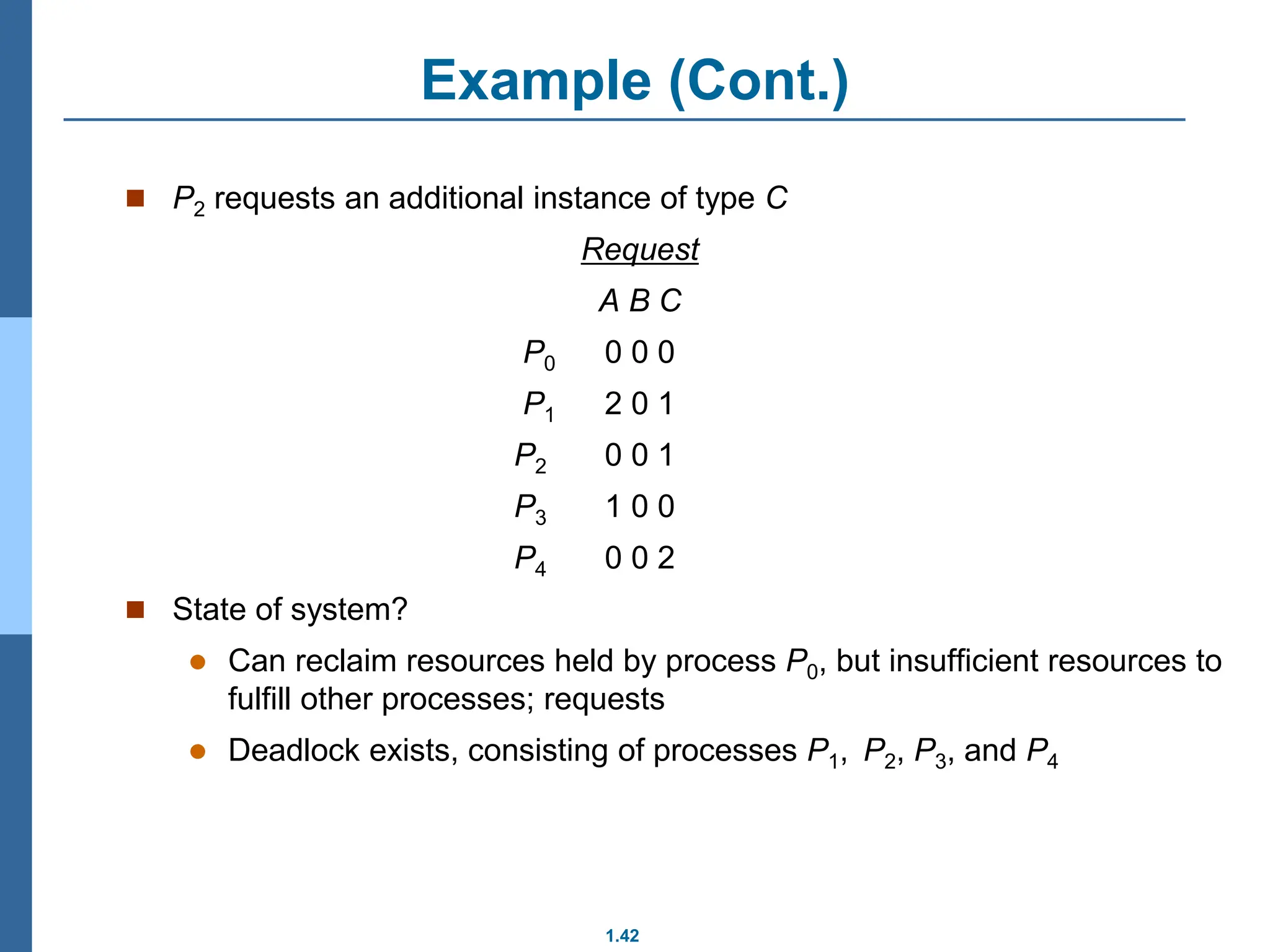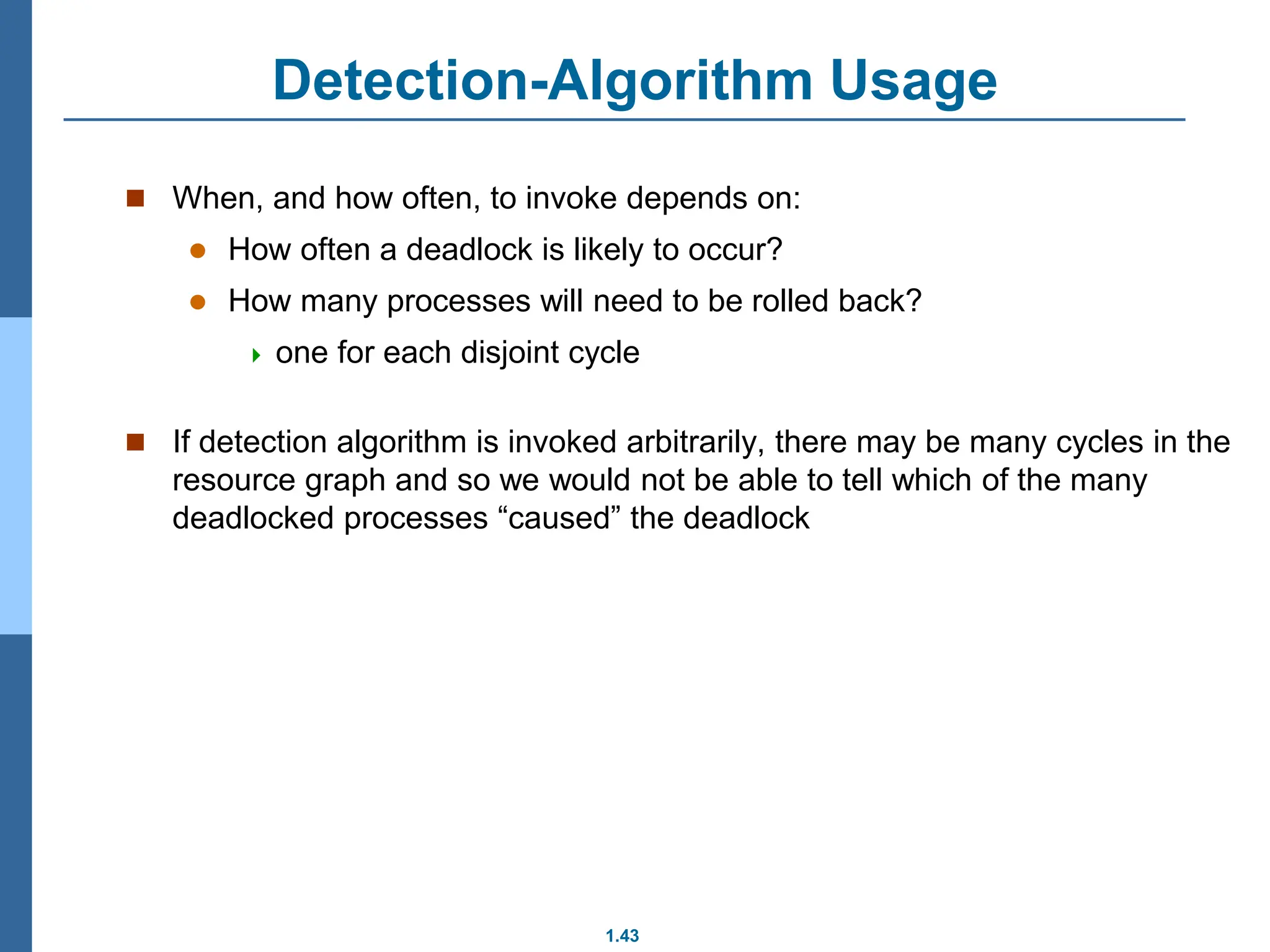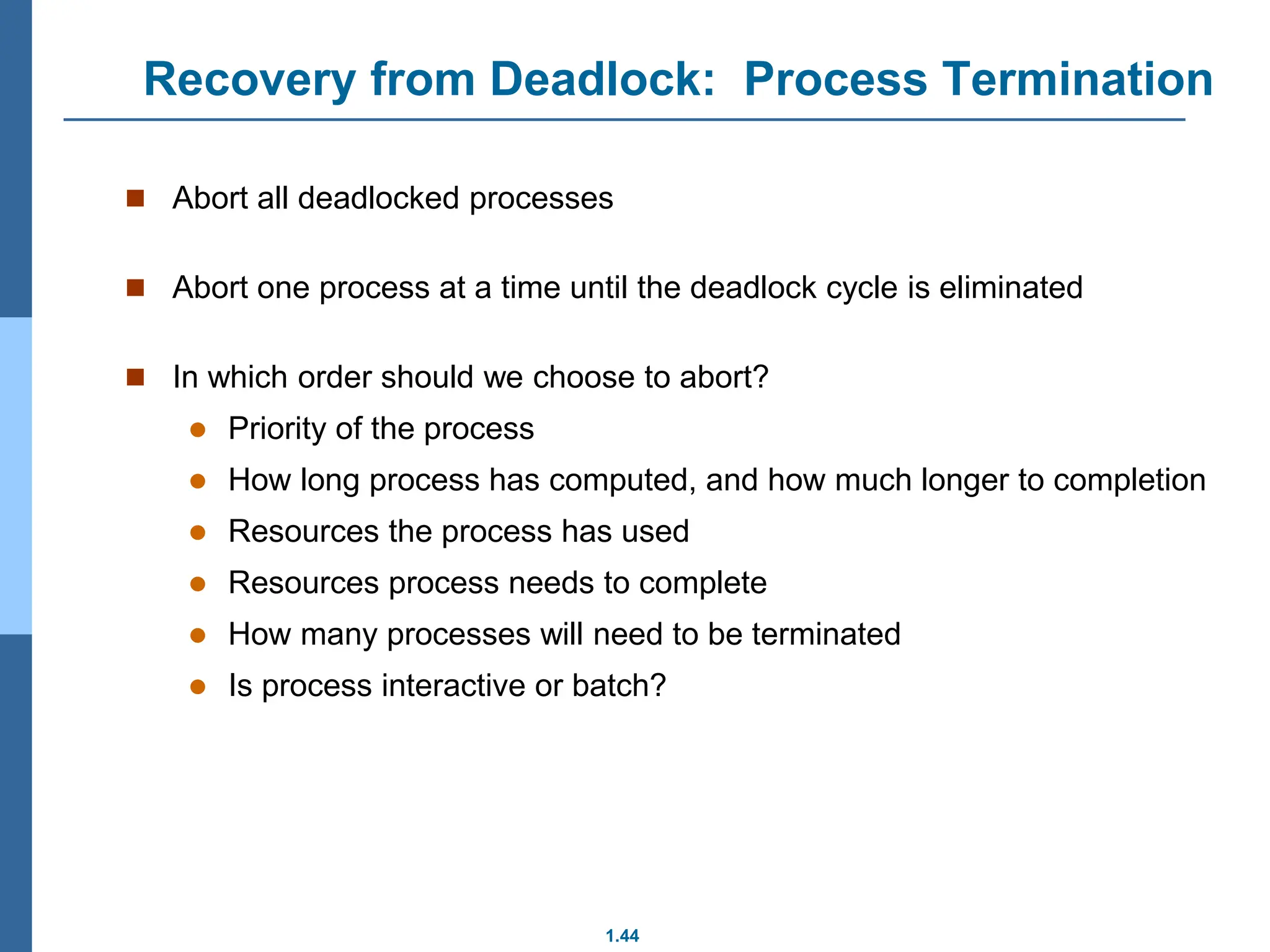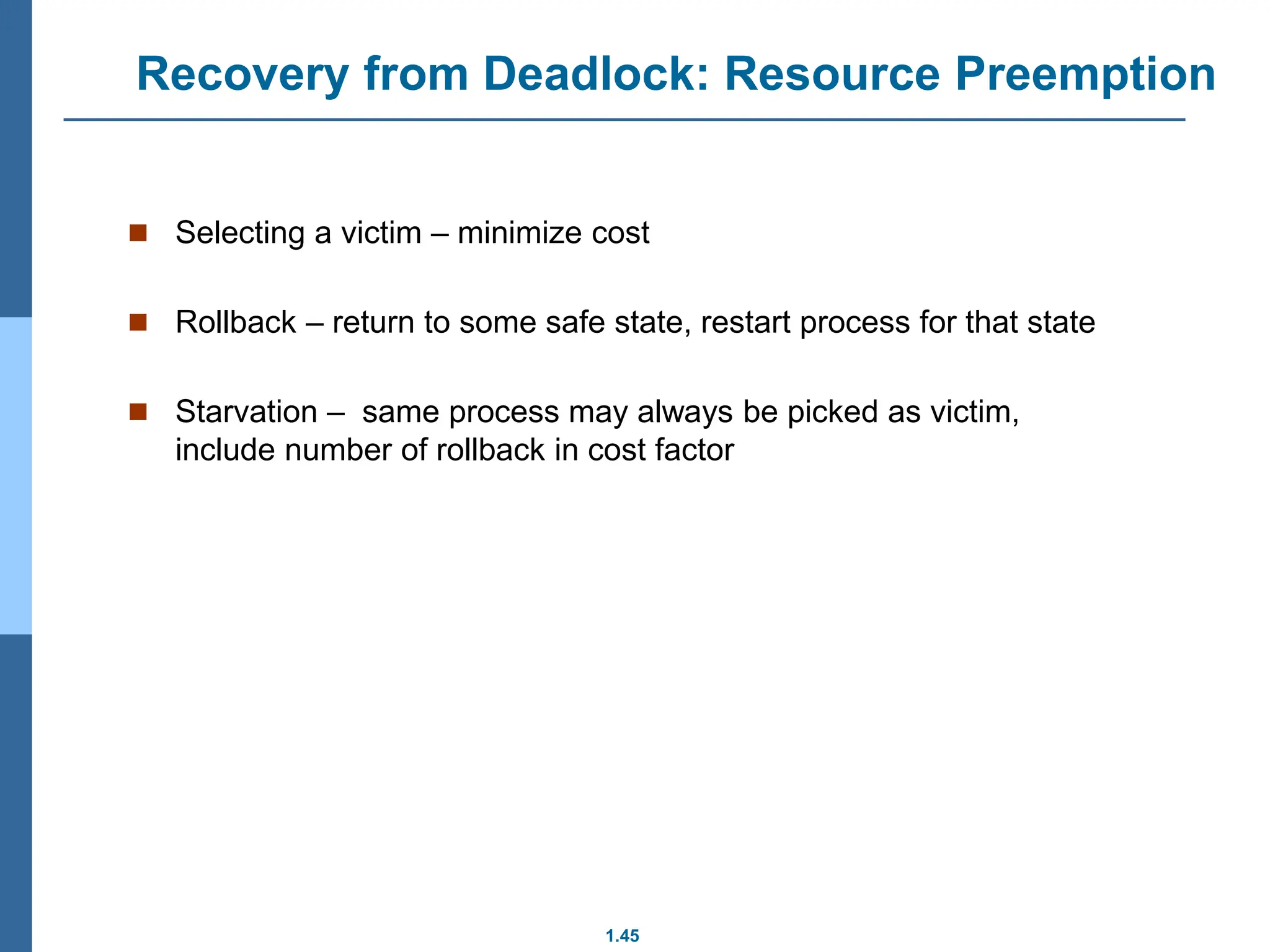The document discusses different methods for handling deadlocks in computer systems, including deadlock prevention, avoidance, detection, and recovery. It describes the four necessary conditions for deadlock, and models like the resource allocation graph and banker's algorithm that can be used to prevent or avoid deadlocks by ensuring the system remains in a safe state where deadlocks cannot occur. Detection methods allow the system to enter a deadlocked state before taking action to recover through rollback or preemption.
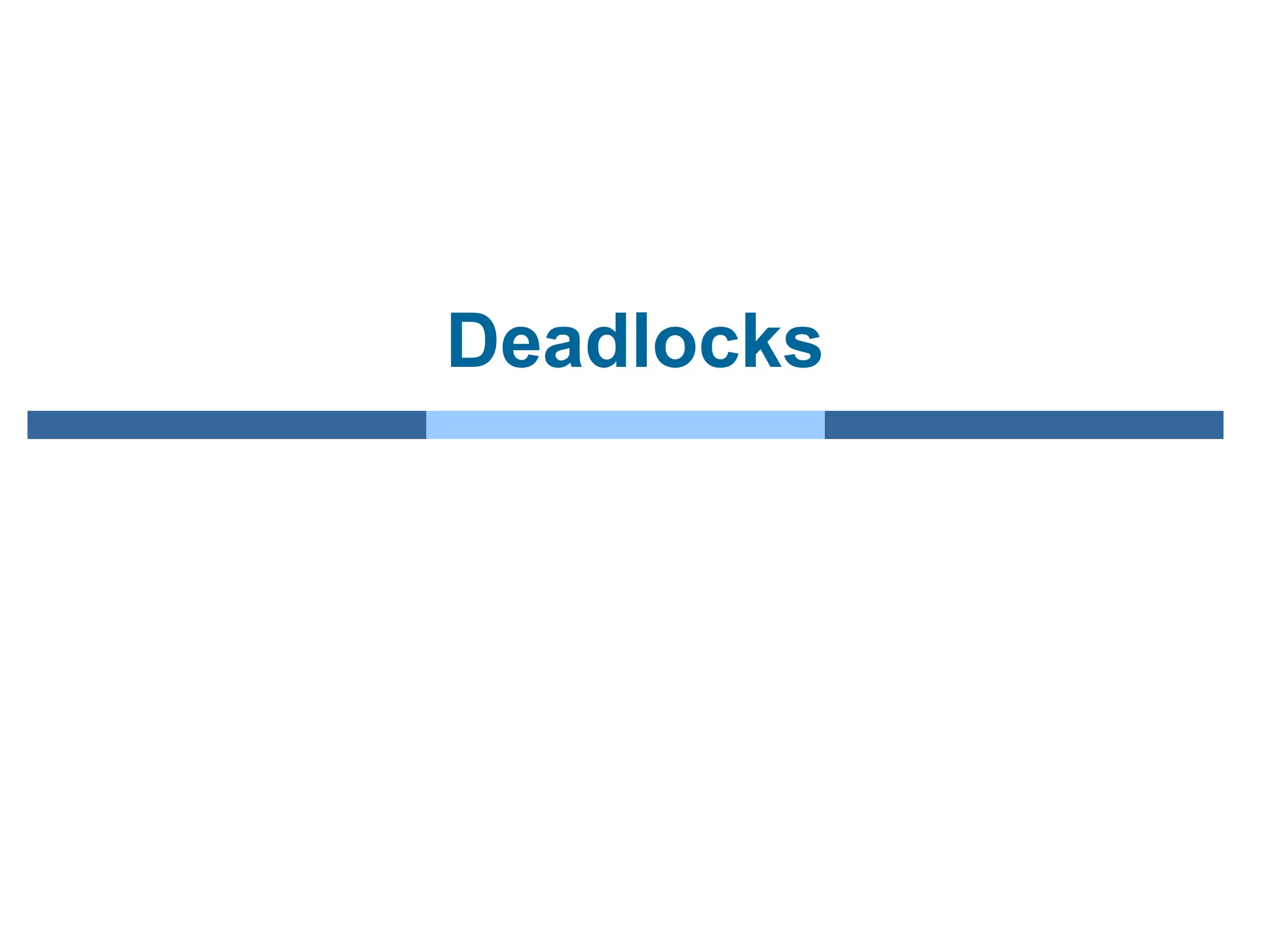
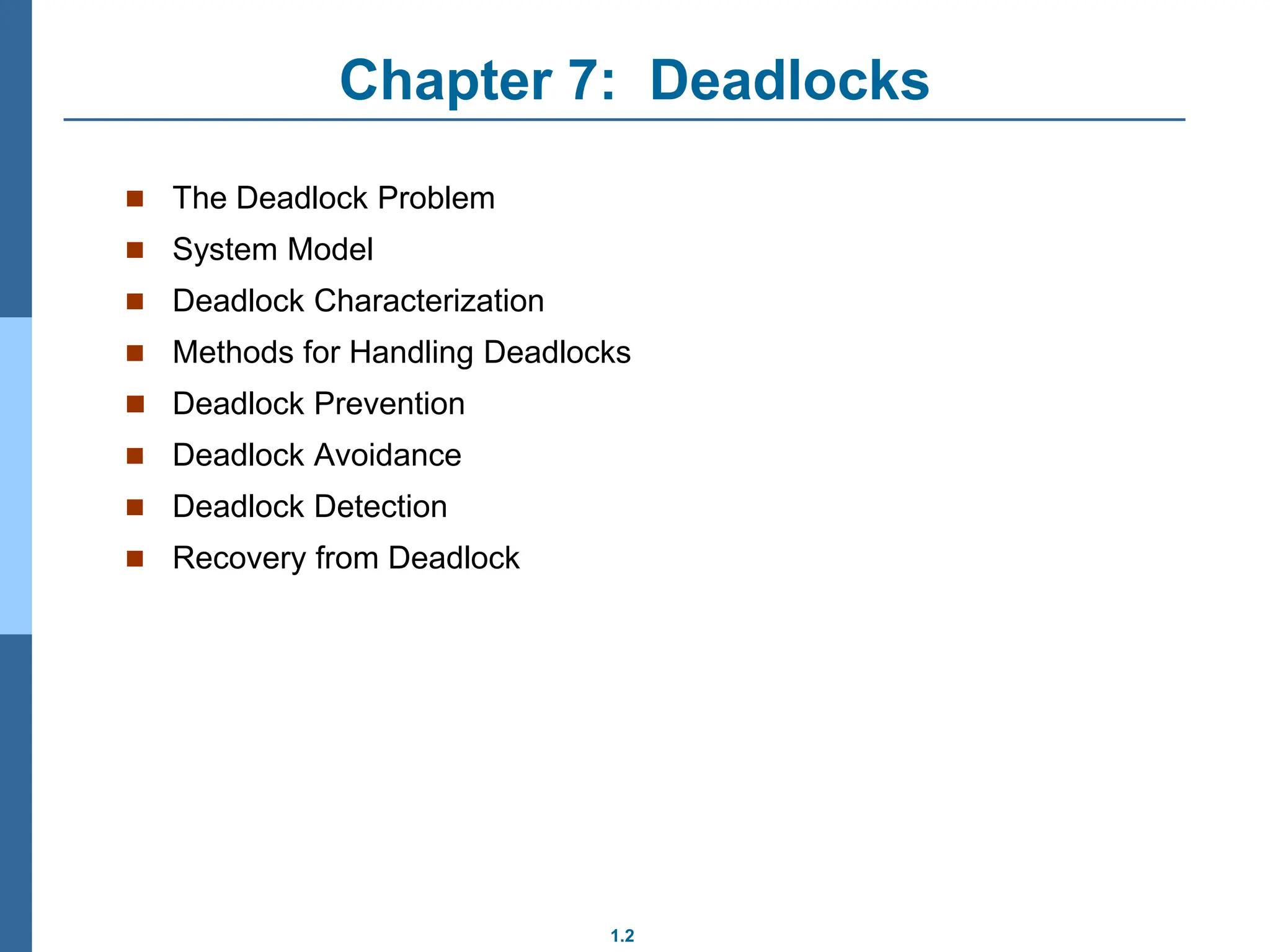
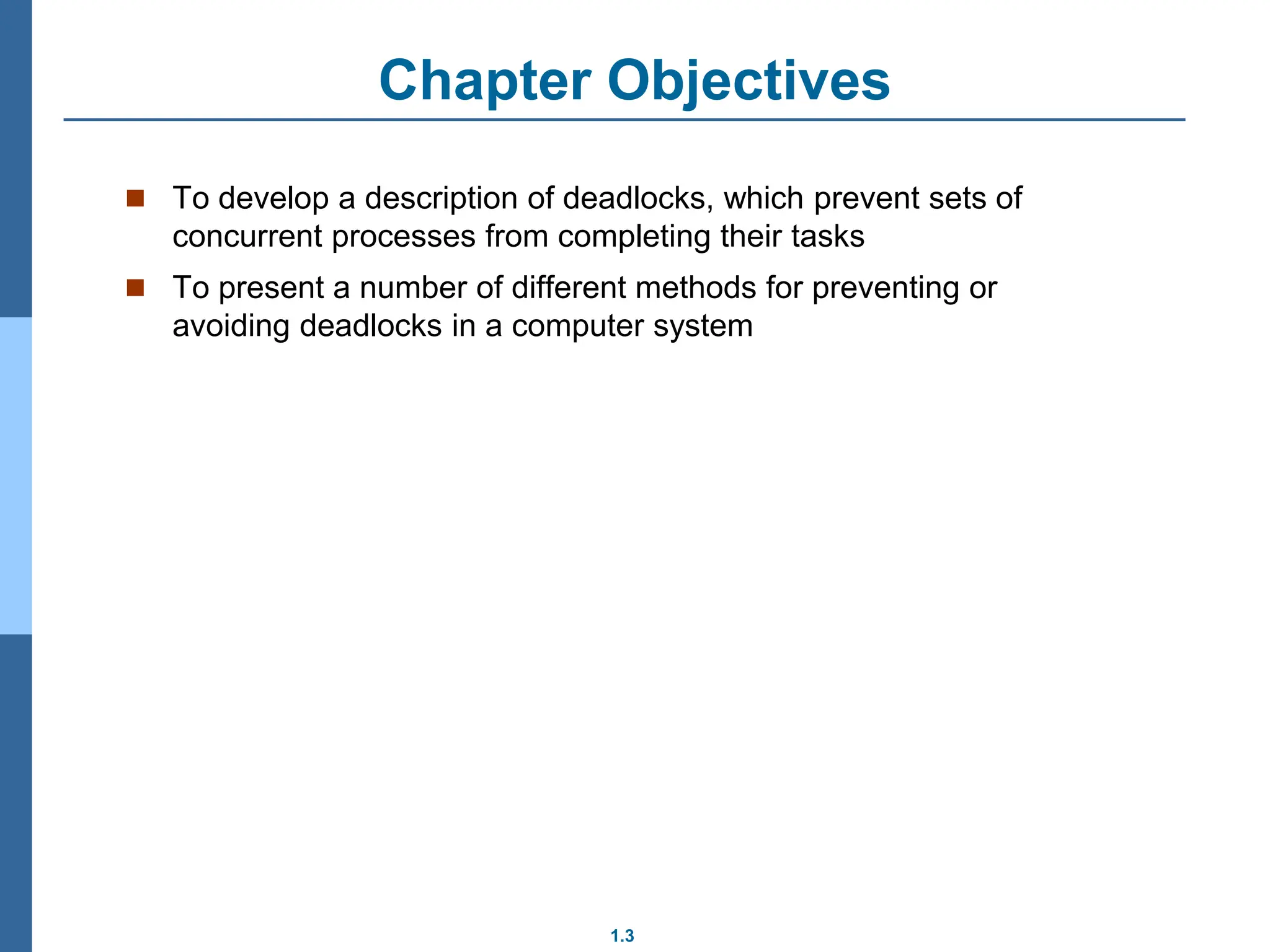

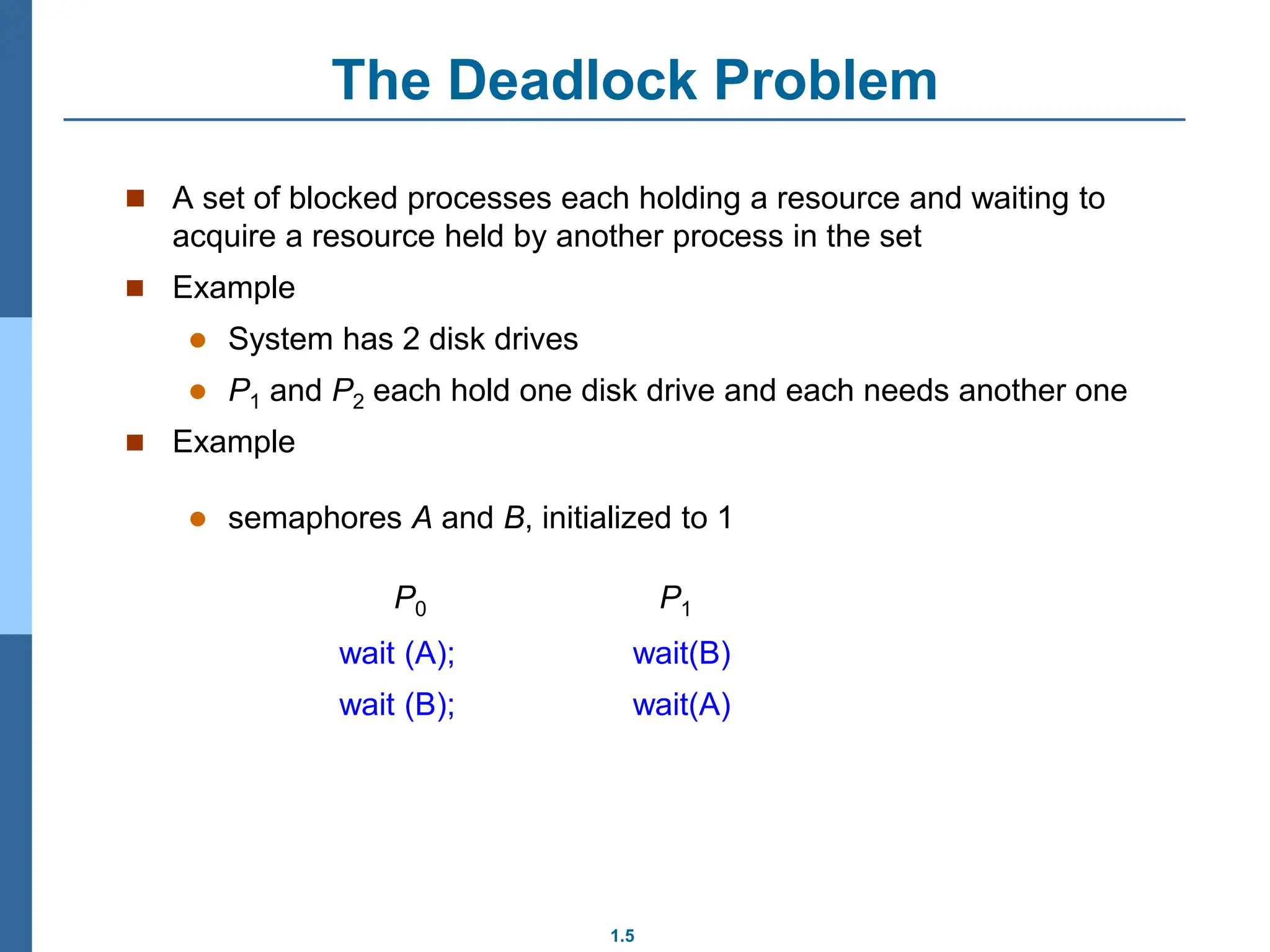
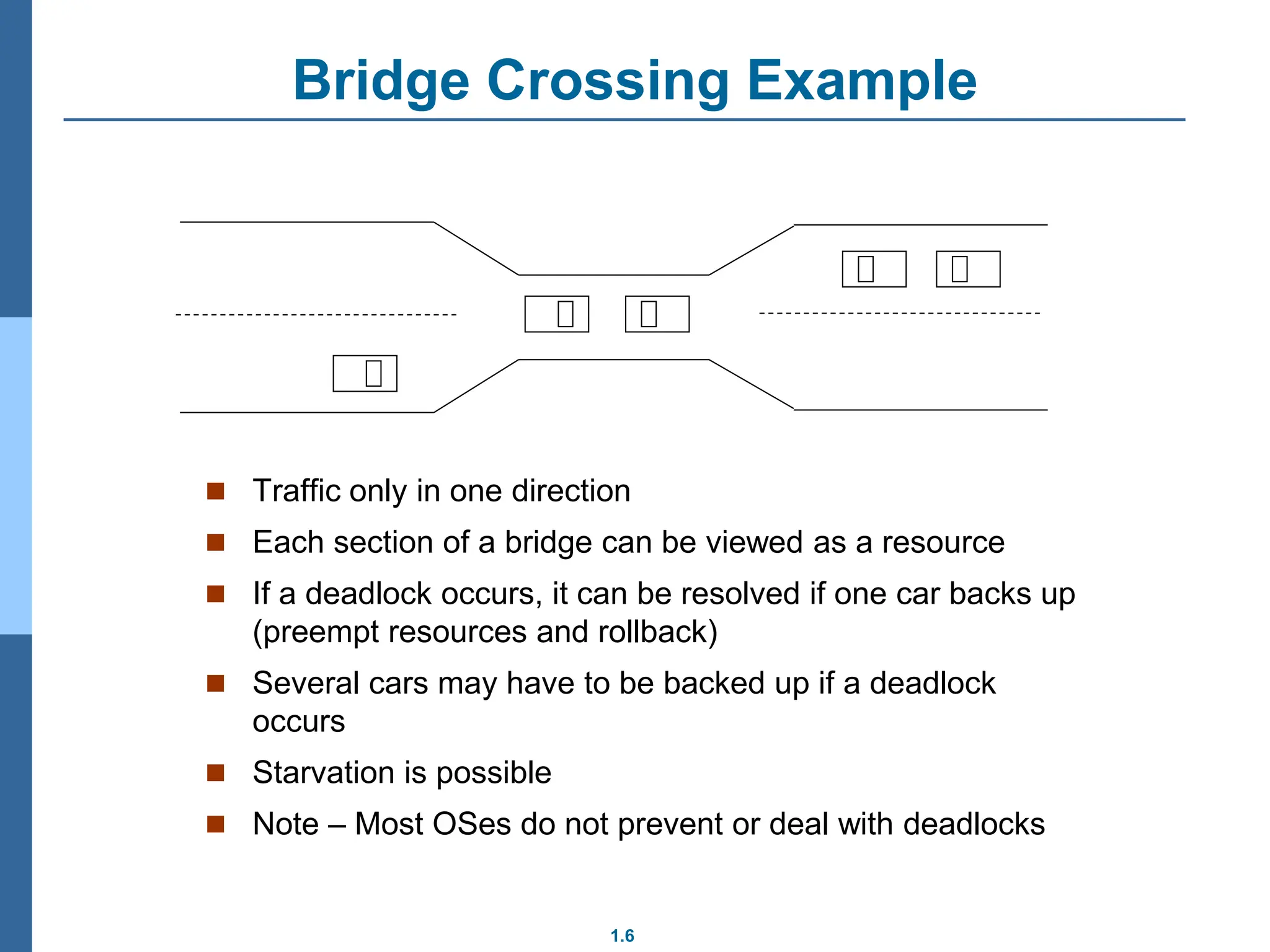
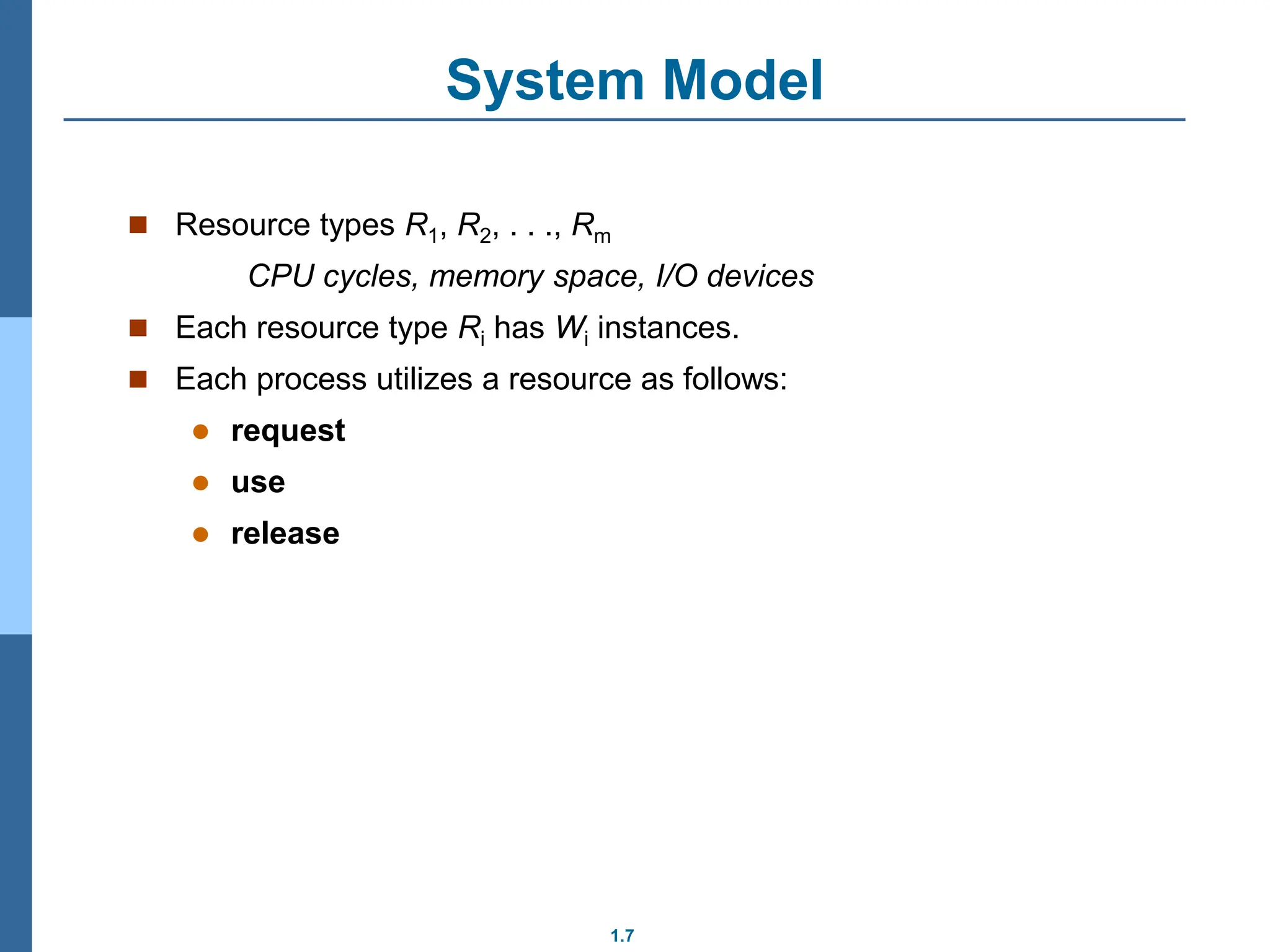

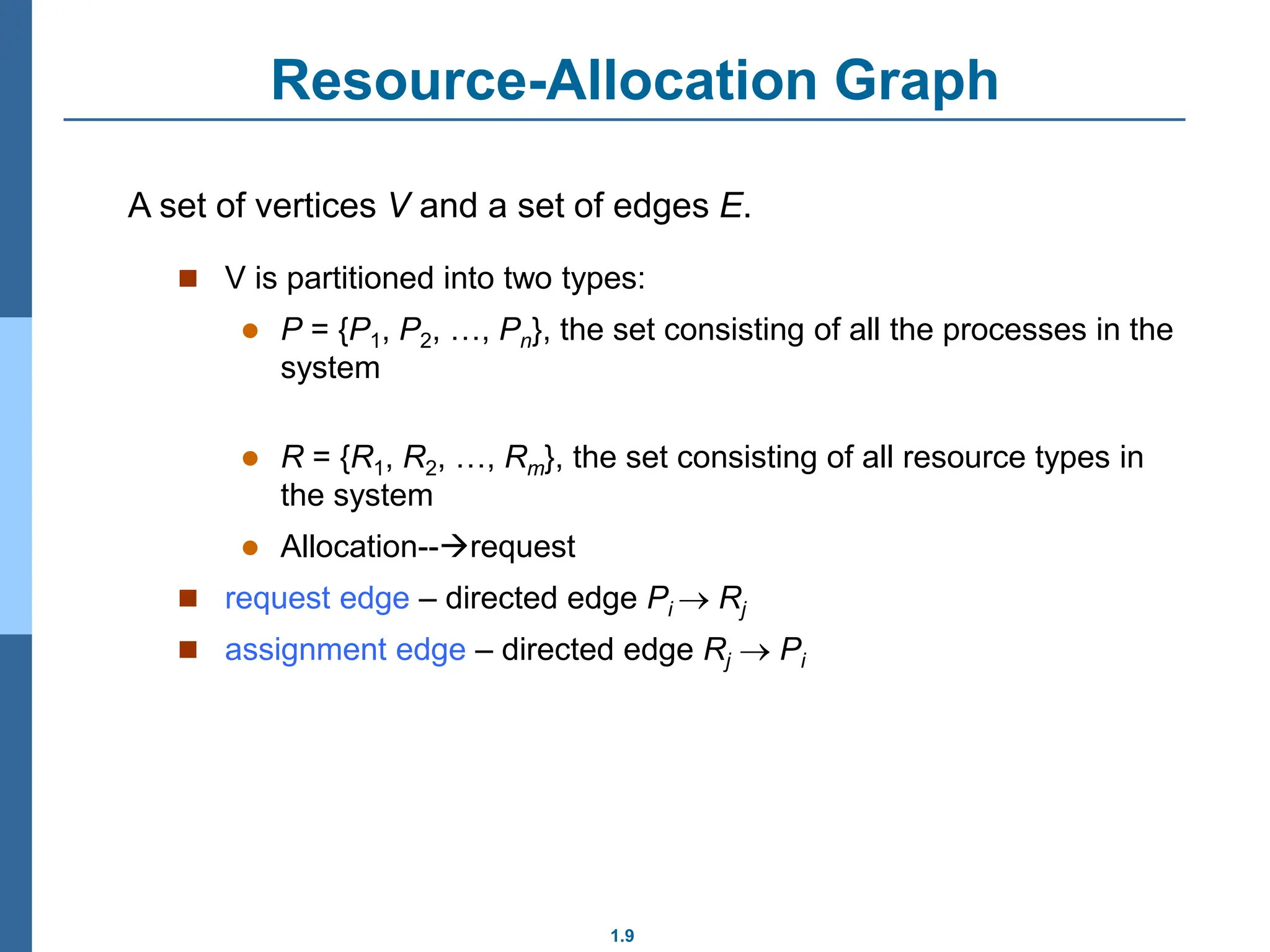
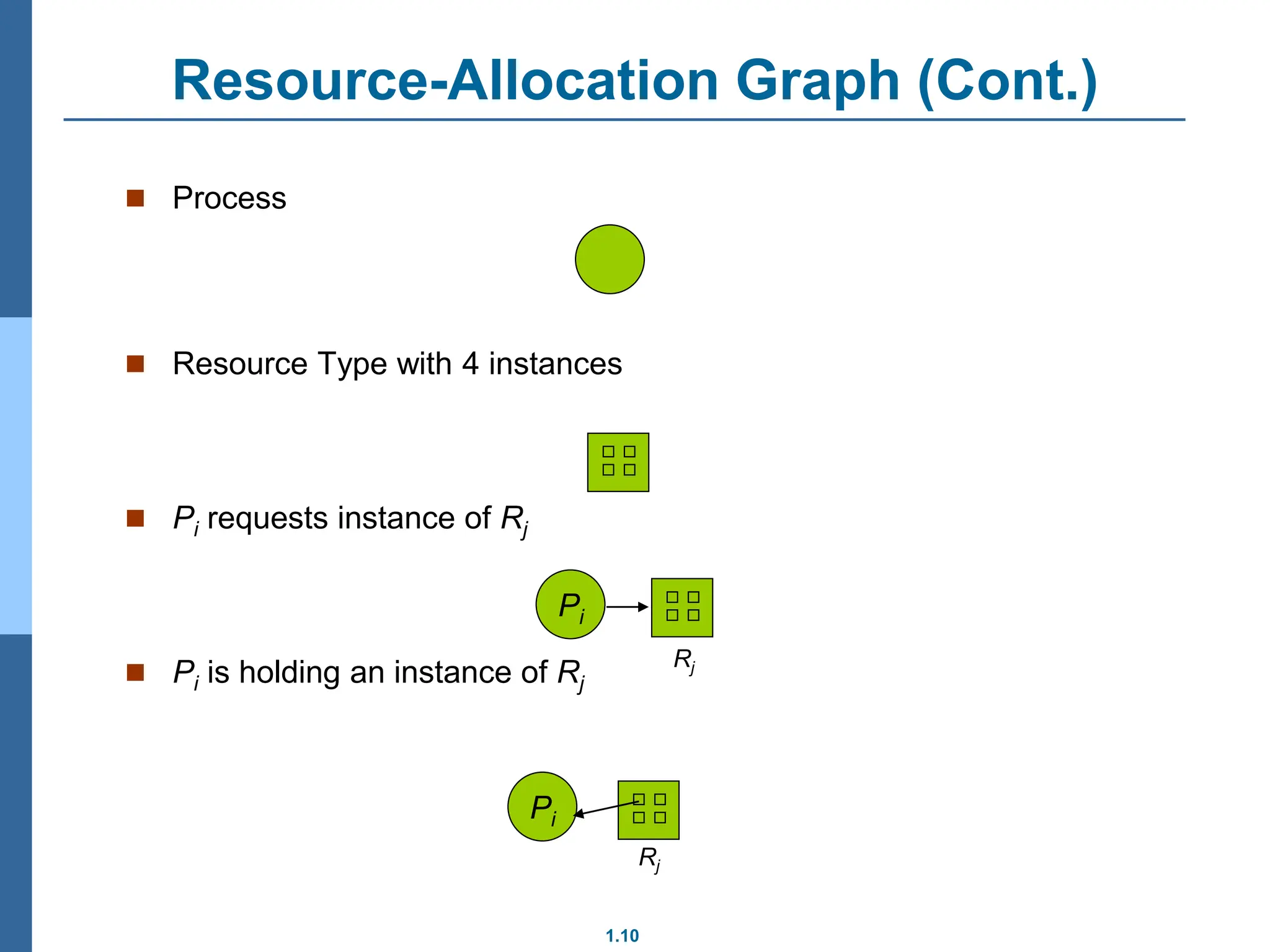
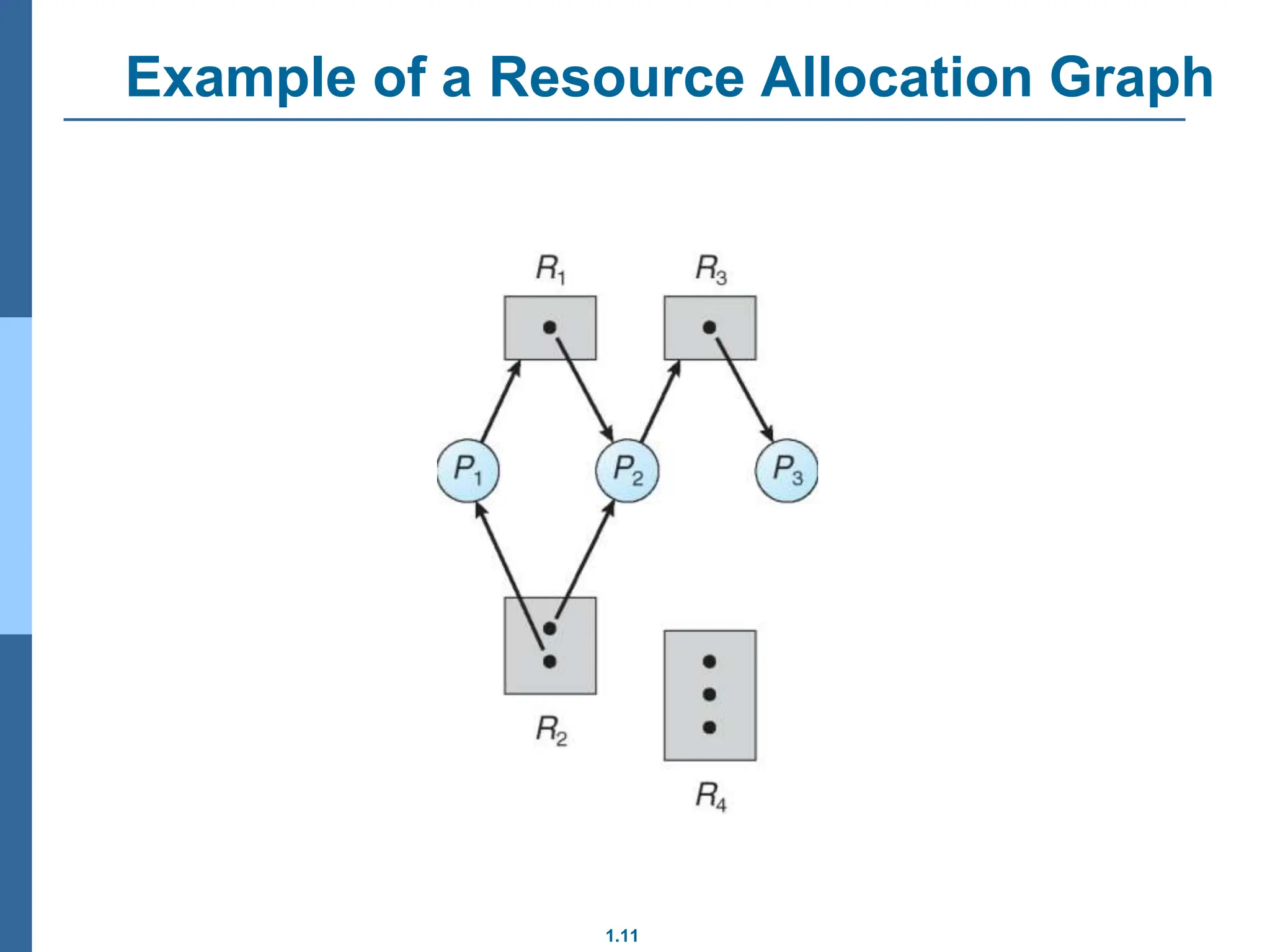
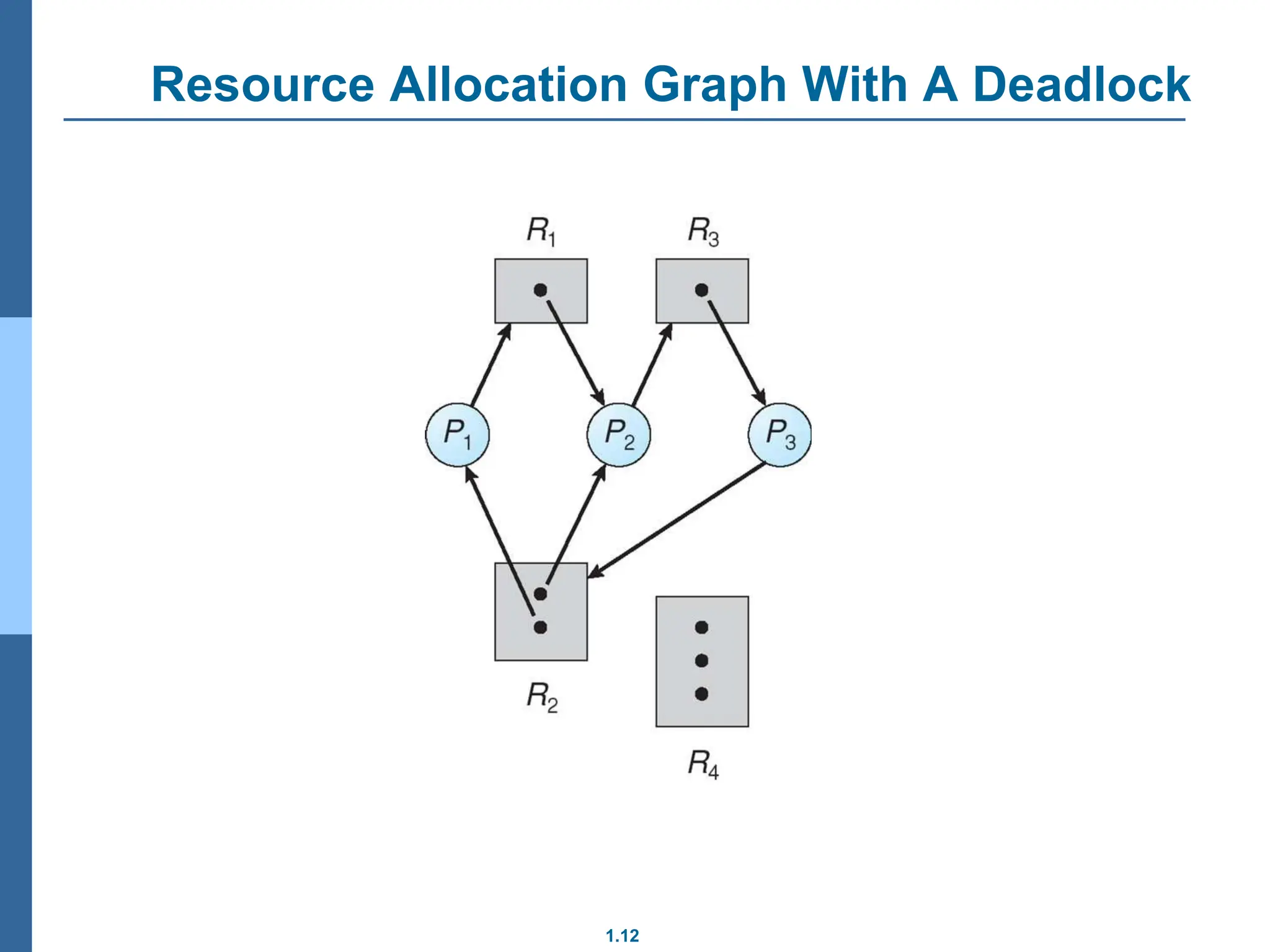
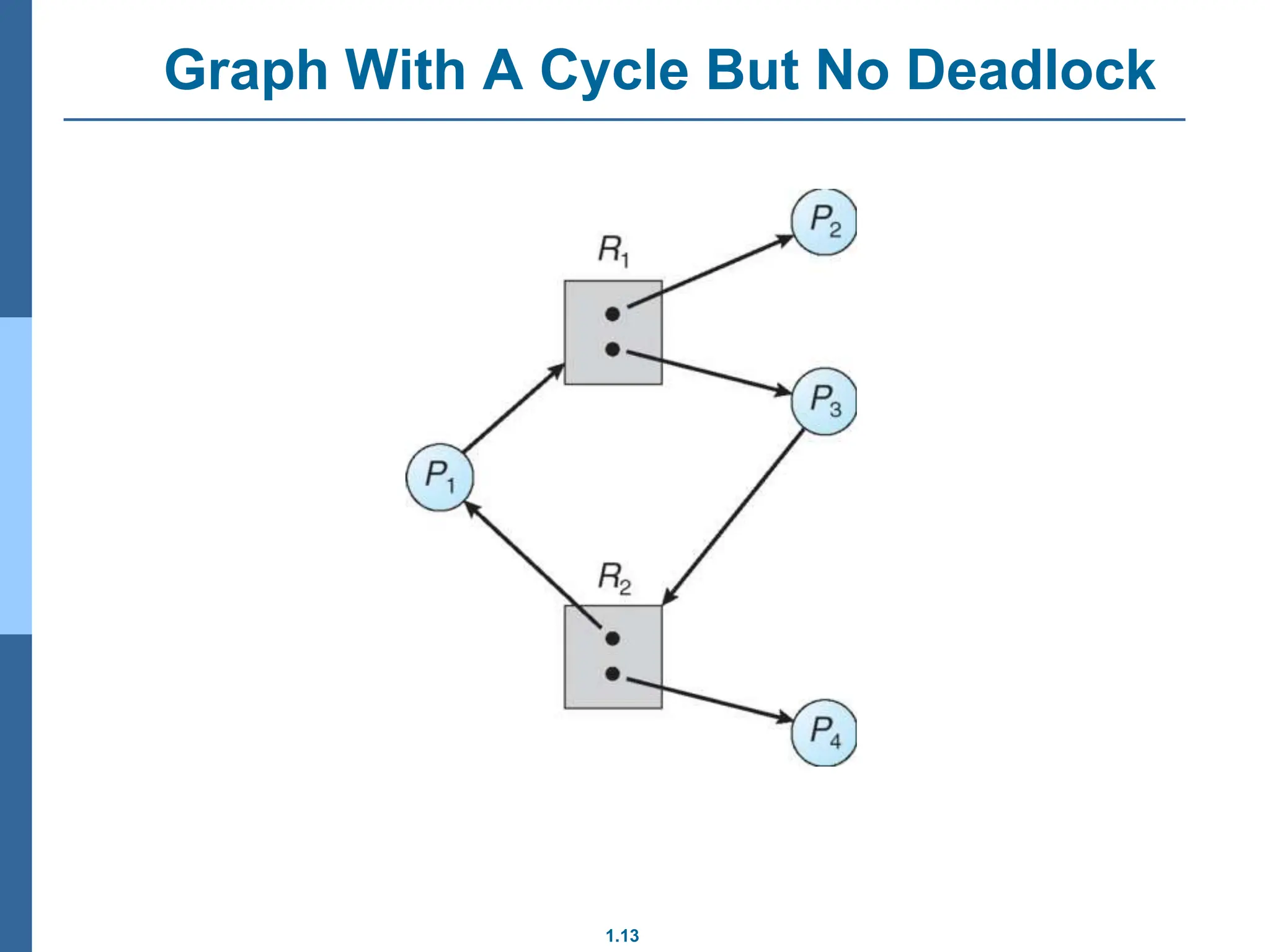
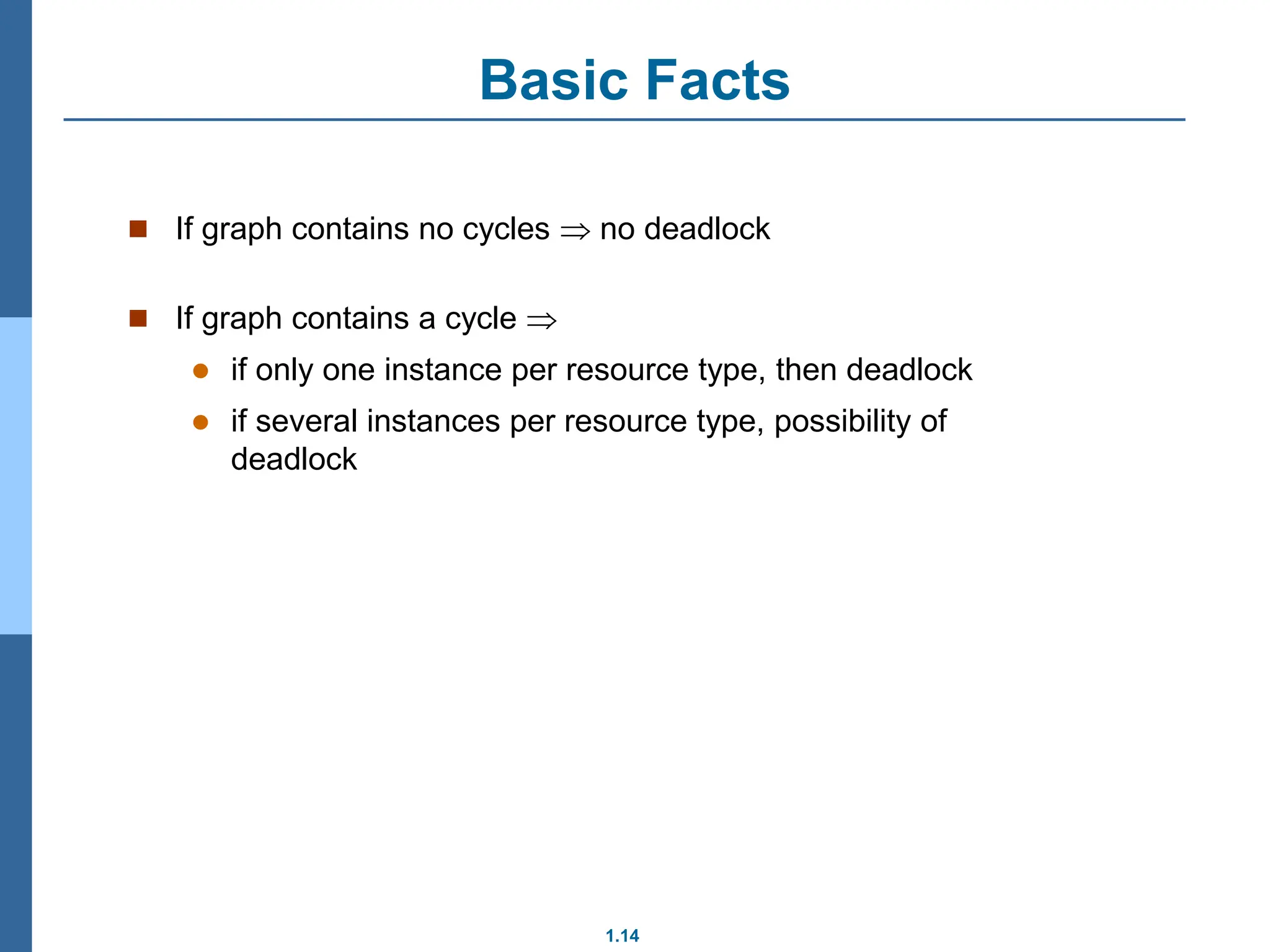
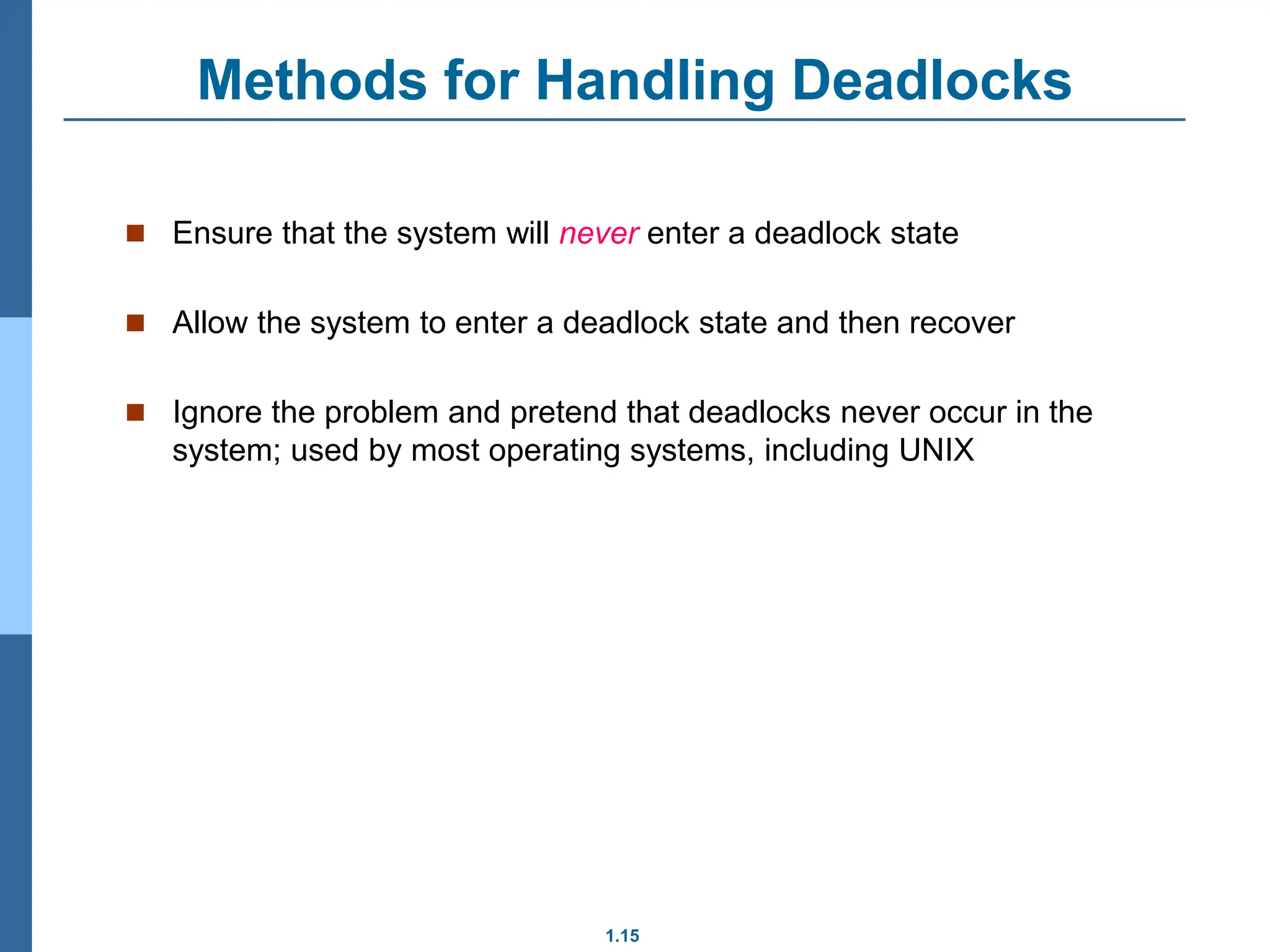
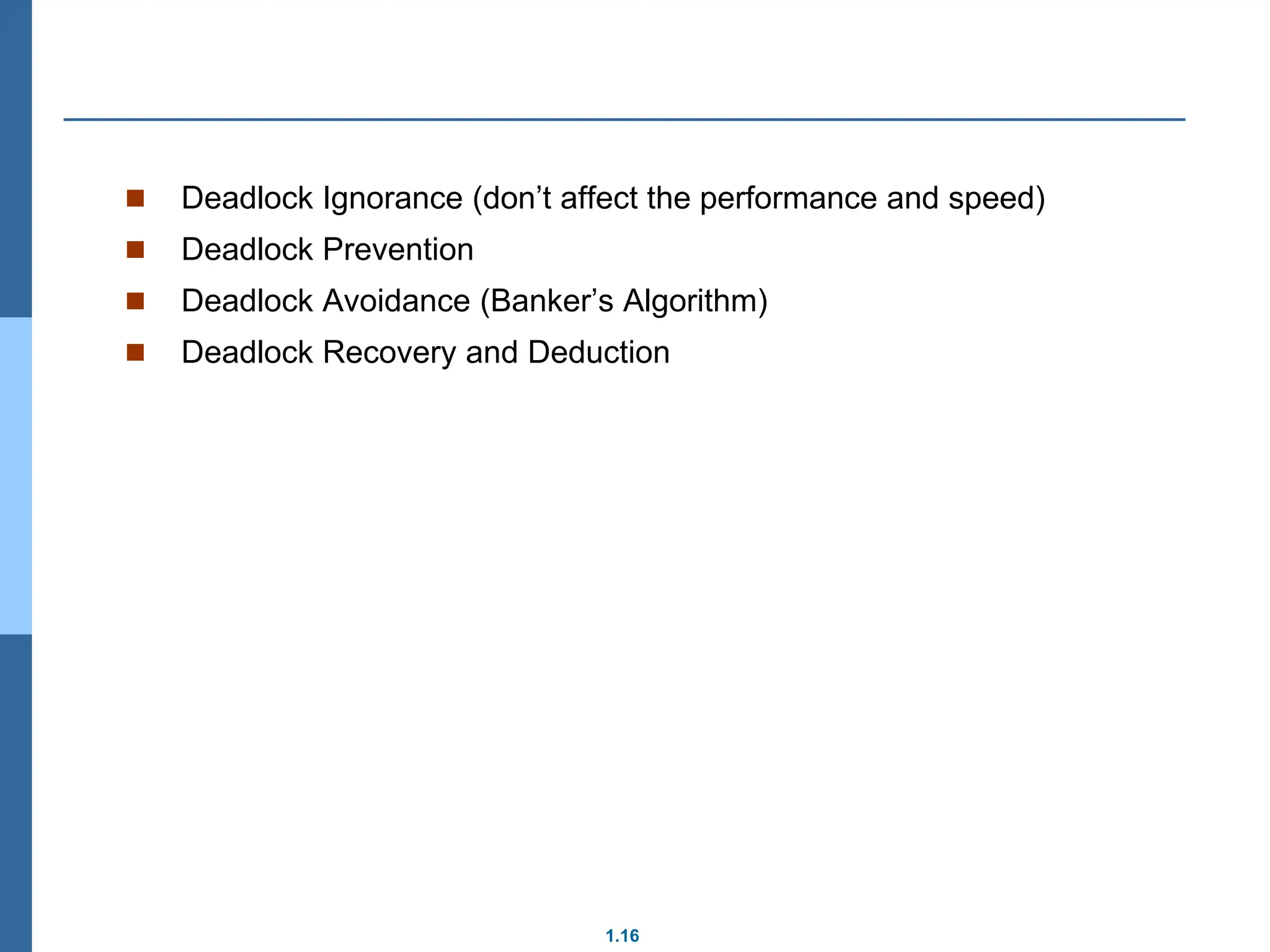
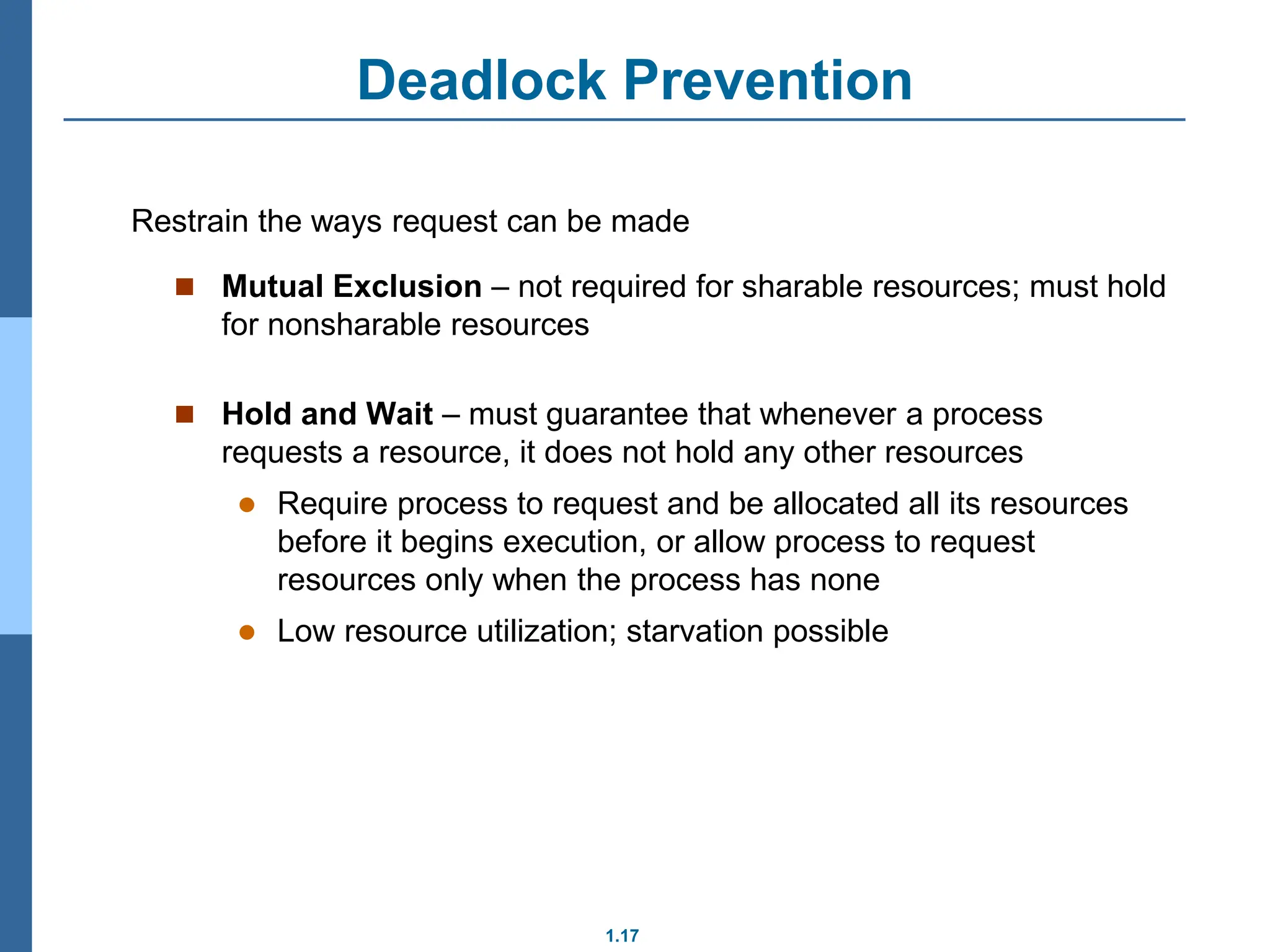

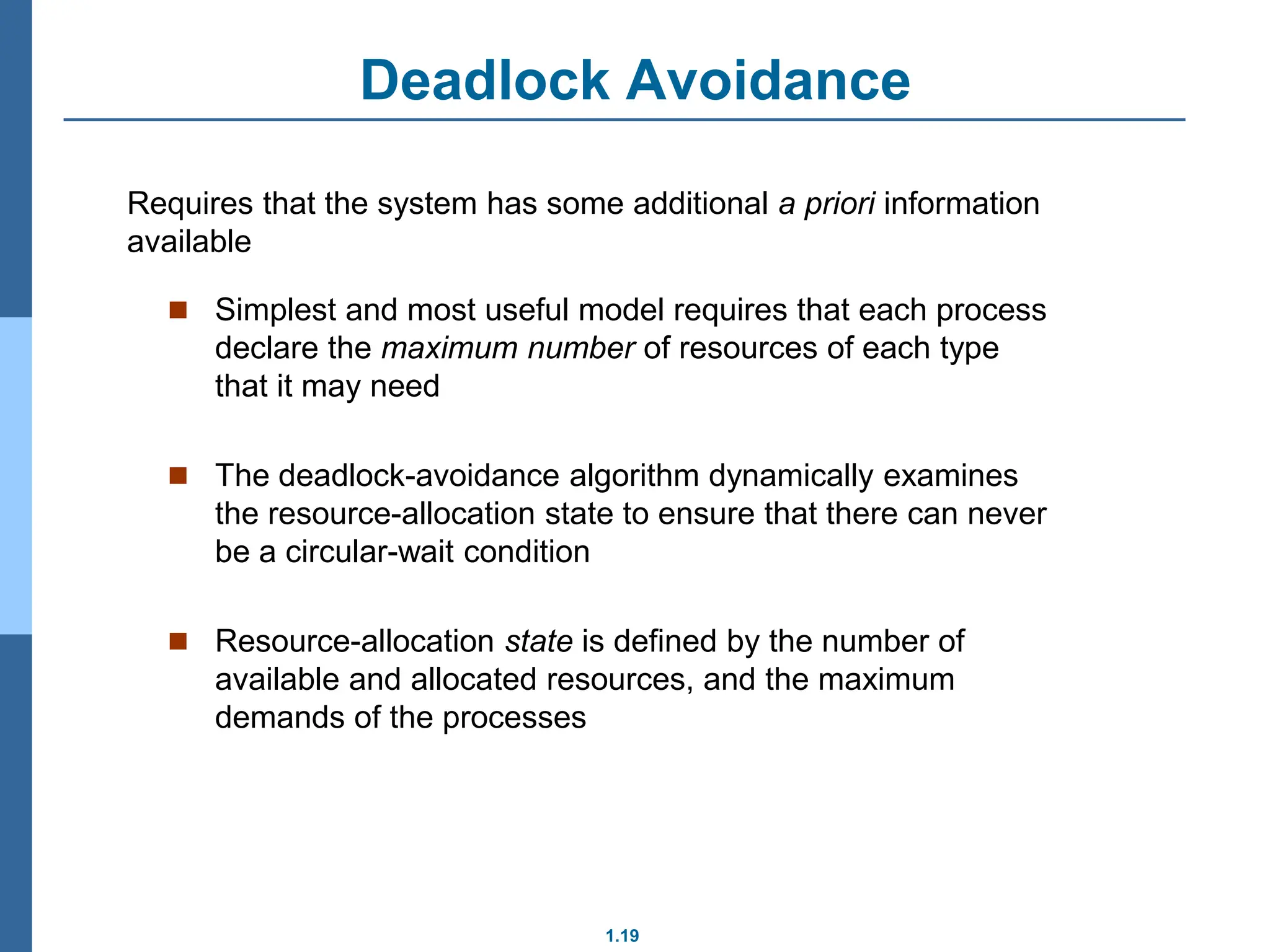
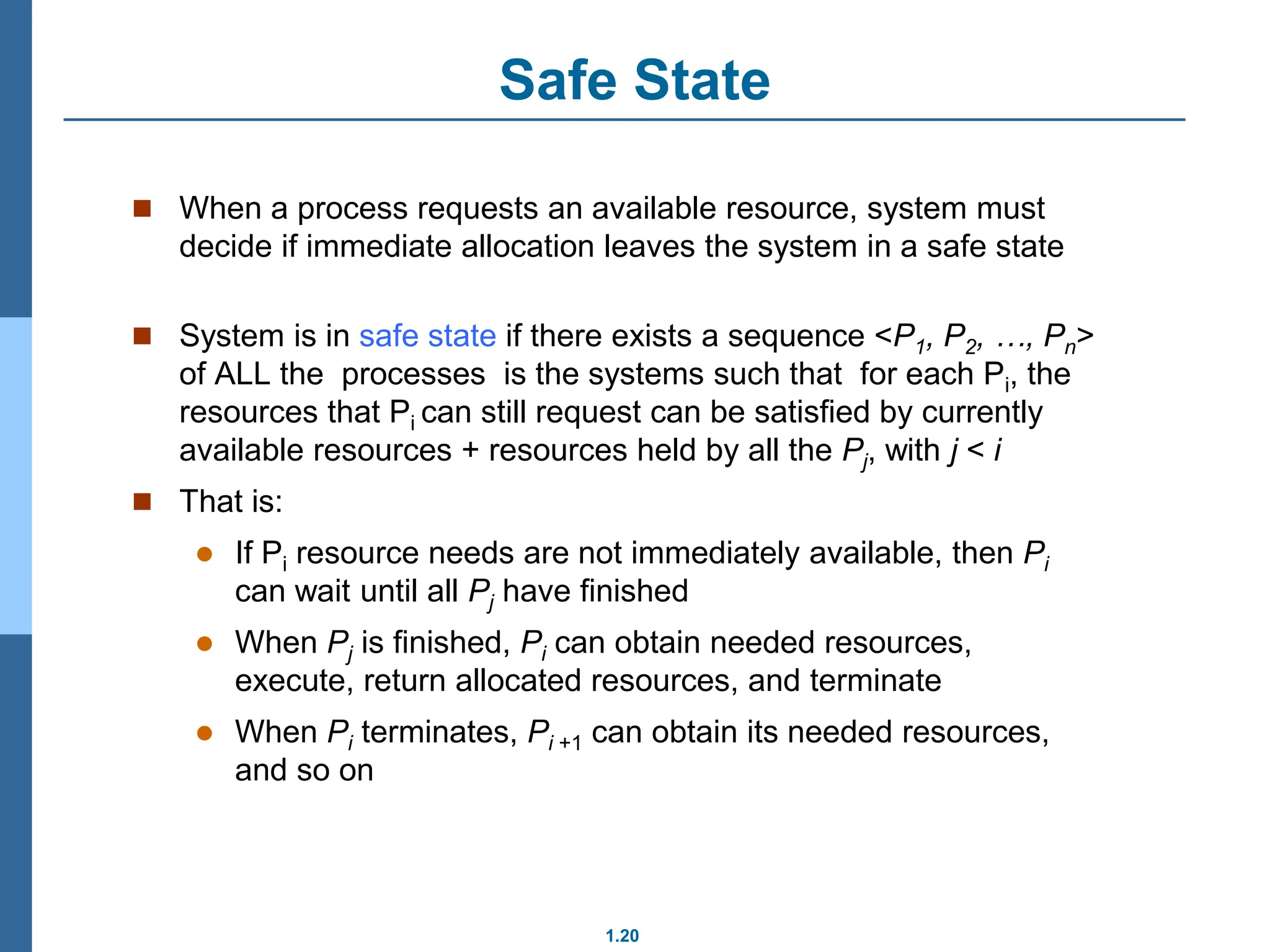
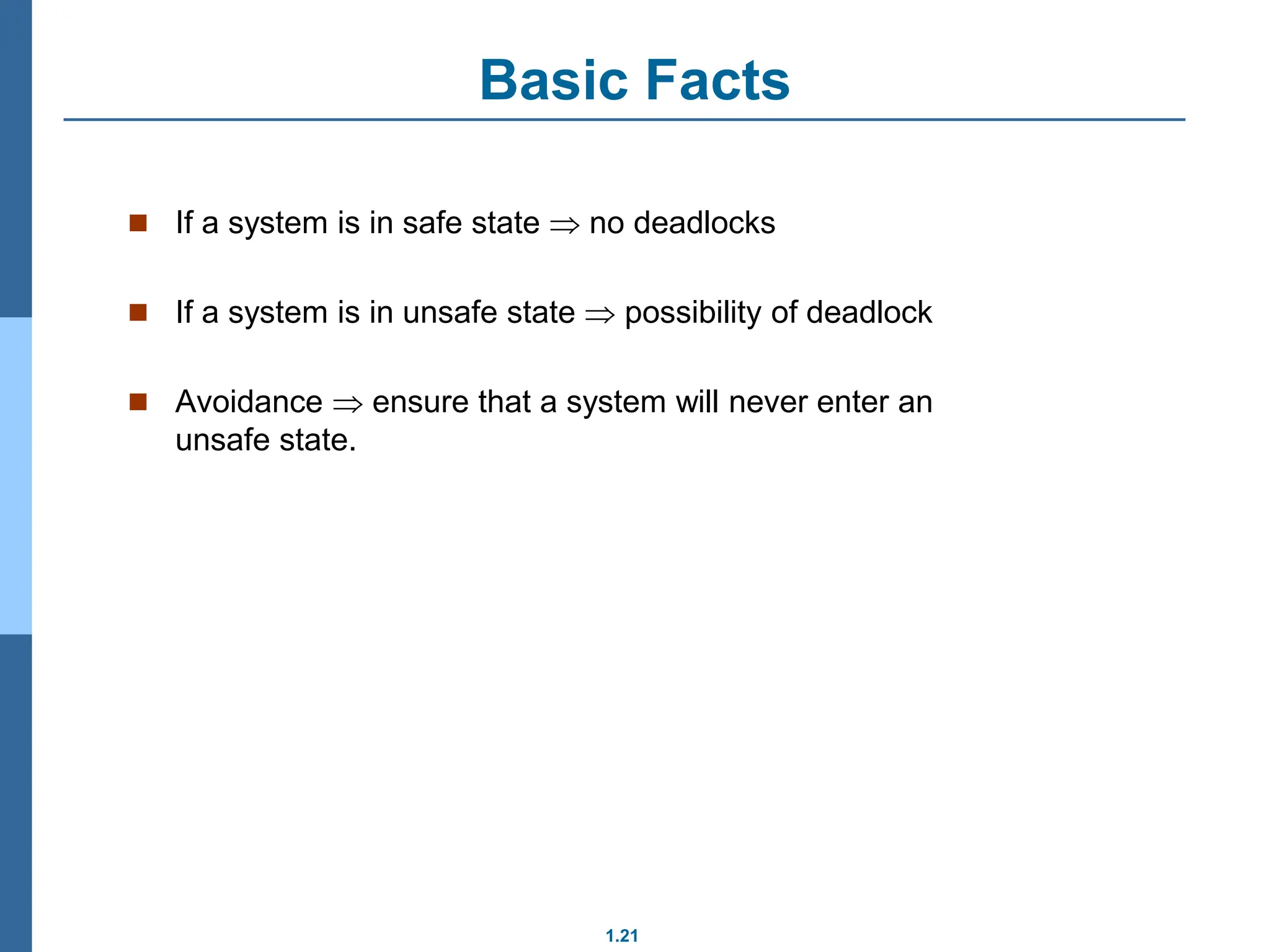
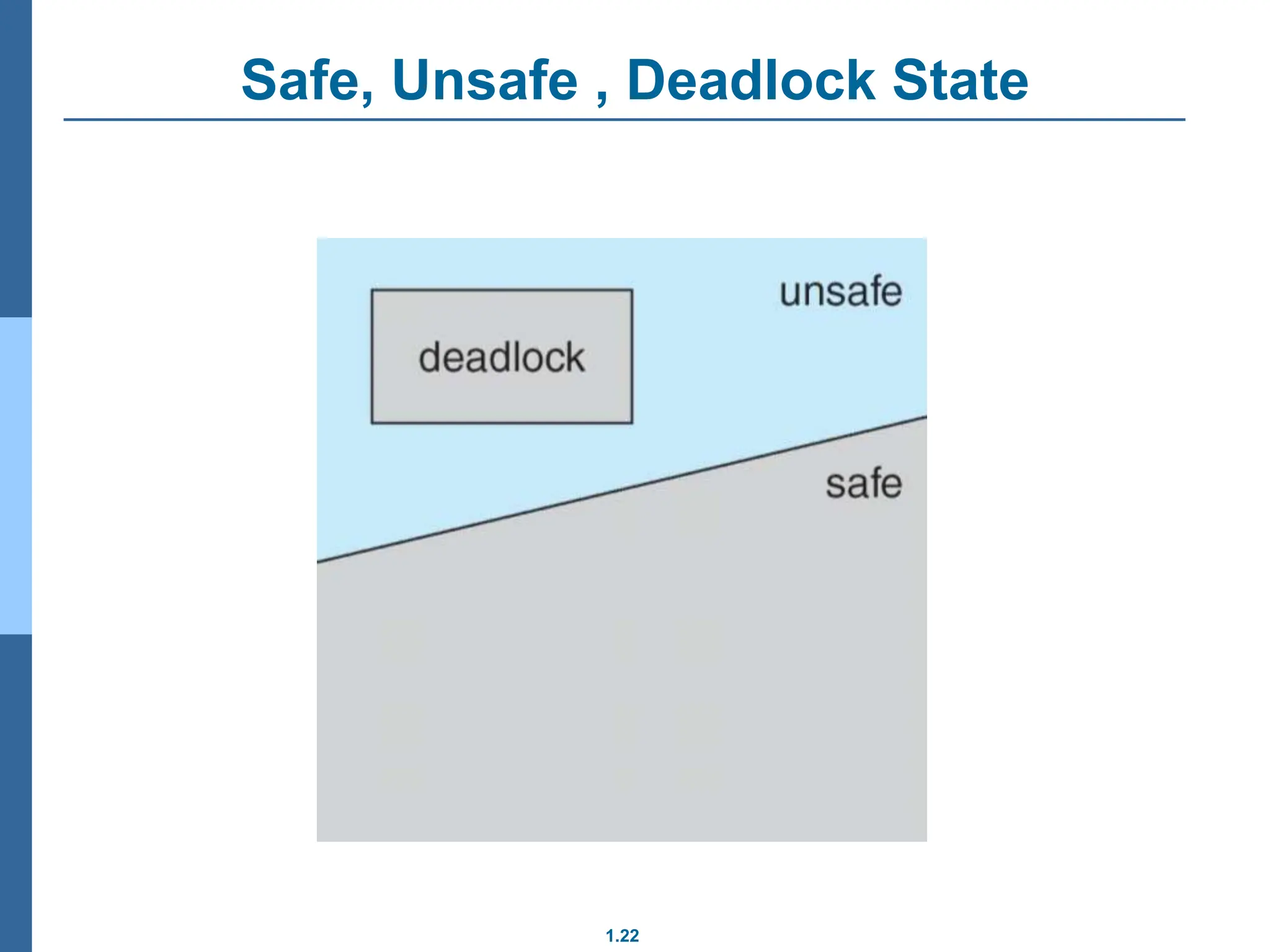
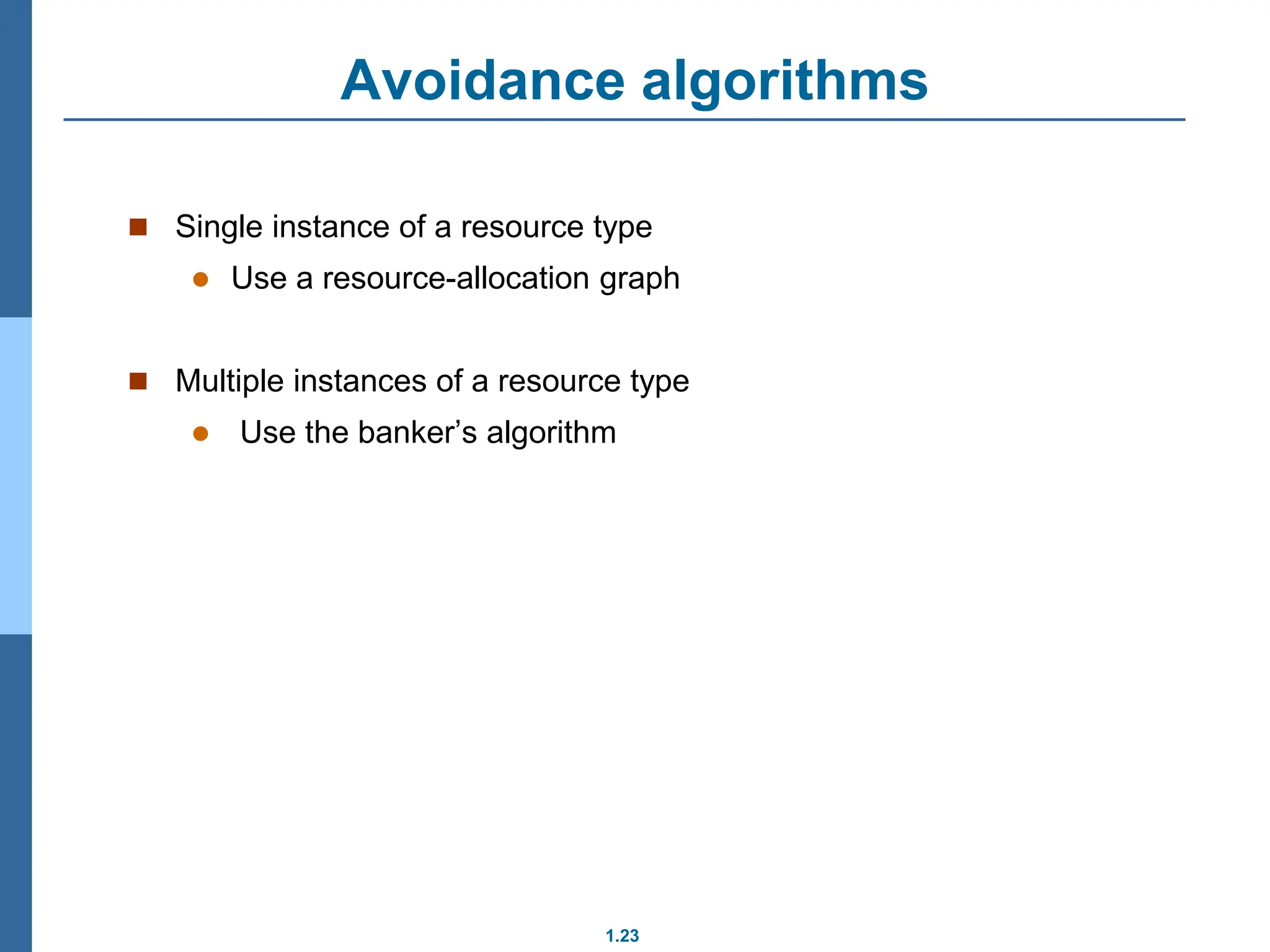
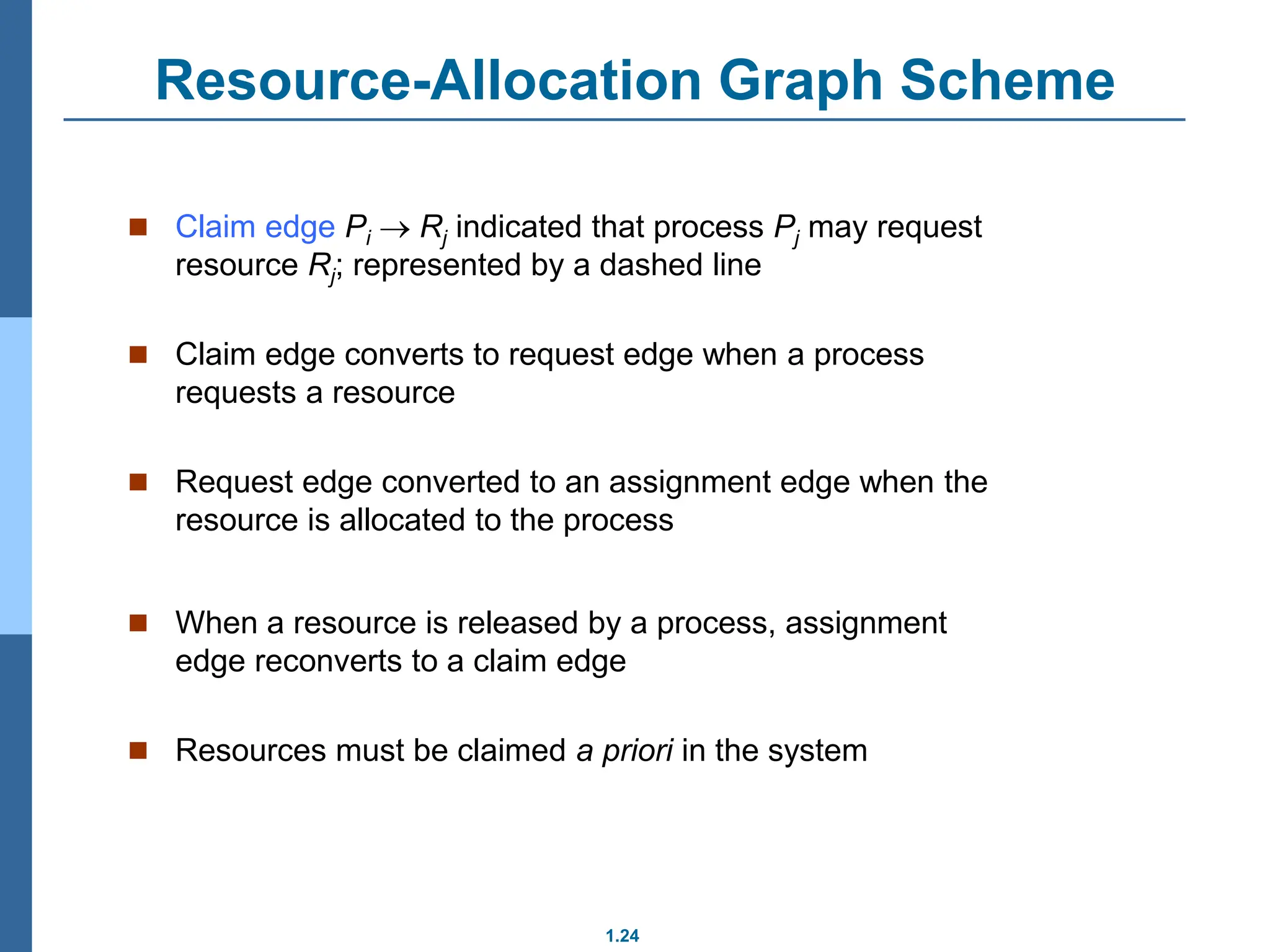

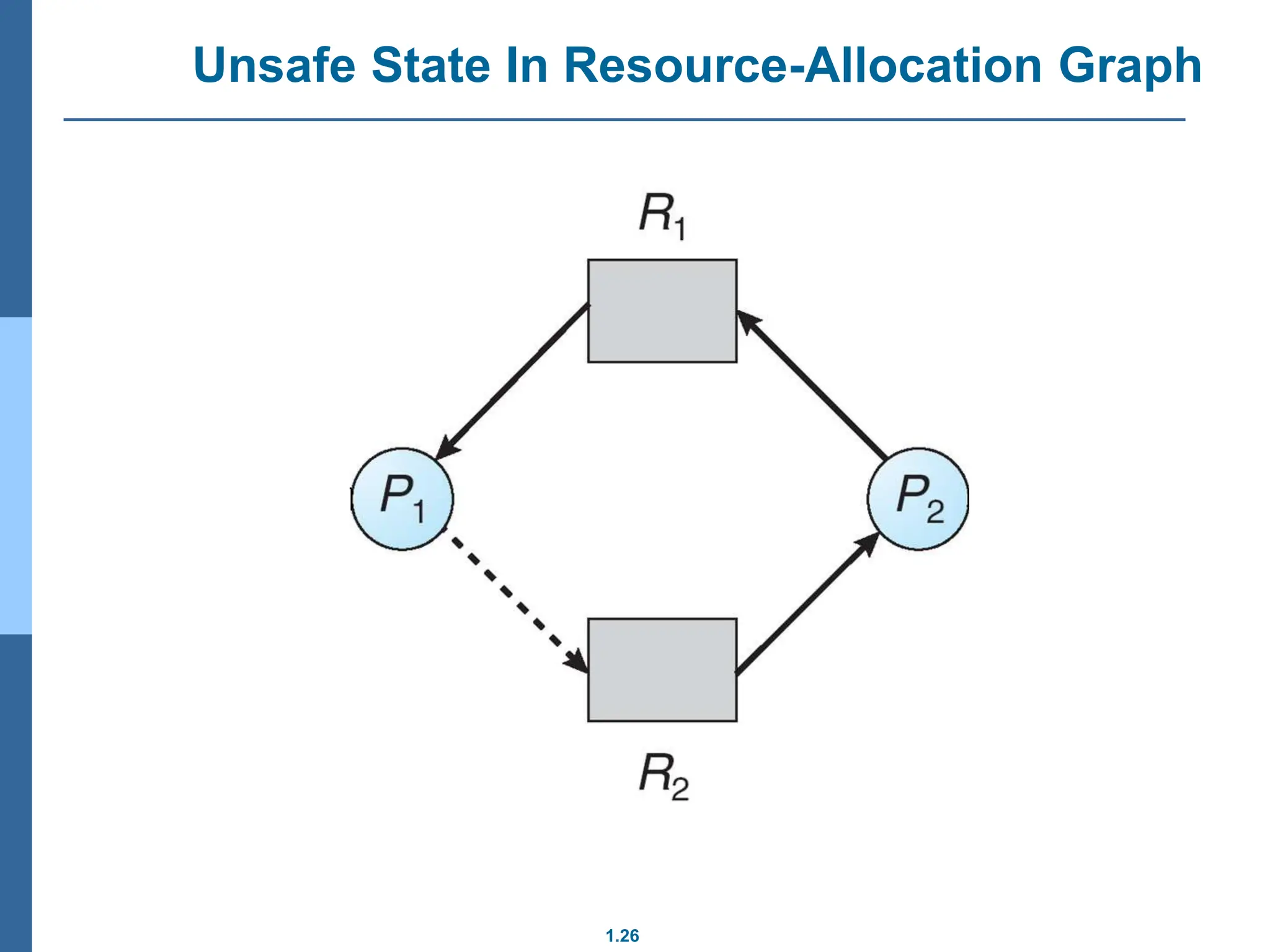
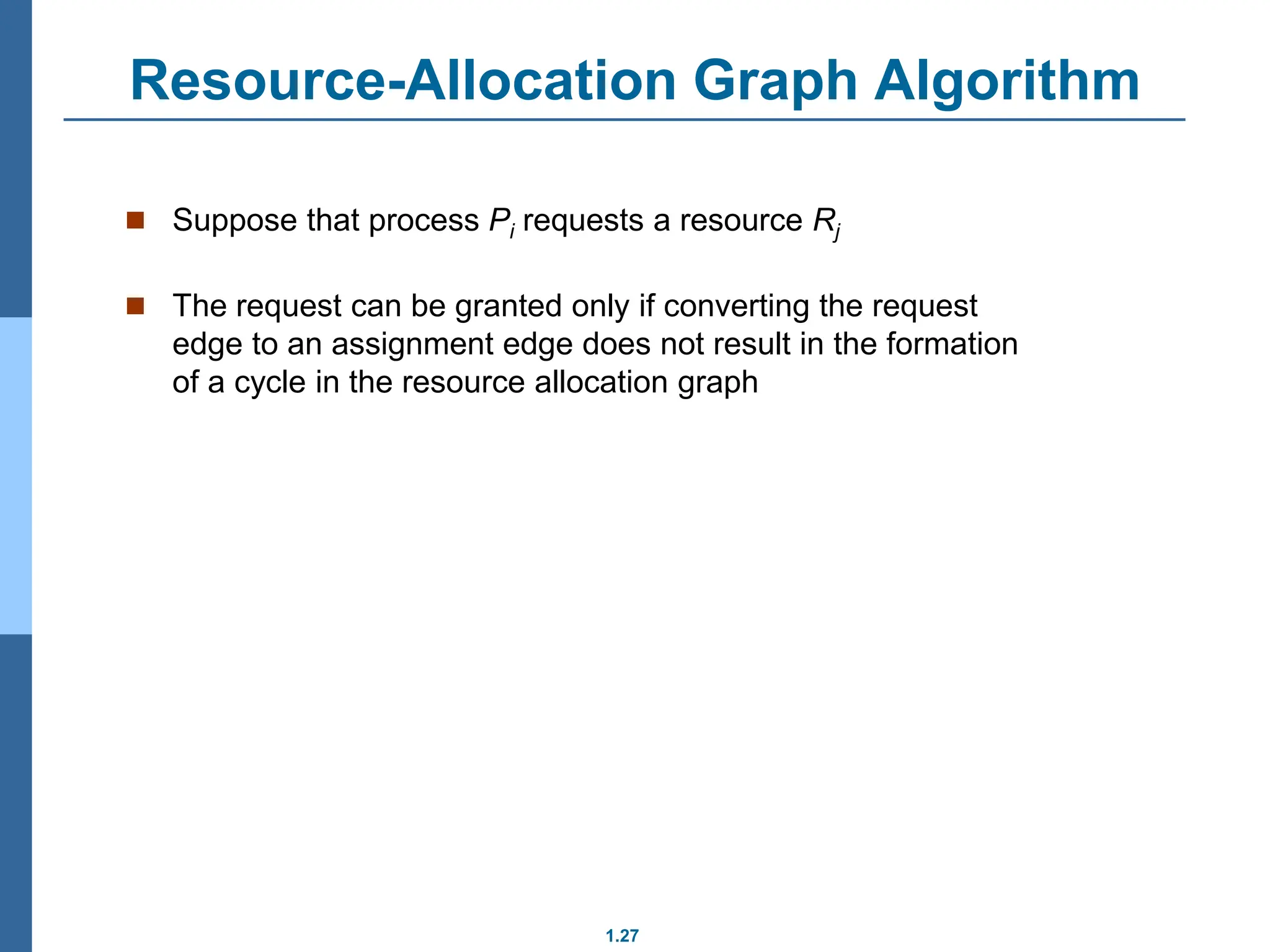

![1.29
Data Structures for the Banker’s Algorithm
Available: Vector of length m. If available [j] = k, there are k
instances of resource type Rj available
Max: n x m matrix. If Max [i,j] = k, then process Pi may request at
most k instances of resource type Rj
Allocation: n x m matrix. If Allocation[i,j] = k then Pi is currently
allocated k instances of Rj
Need: n x m matrix. If Need[i,j] = k, then Pi may need k more
instances of Rj to complete its task
Need [i,j] = Max[i,j] – Allocation [i,j]
Let n = number of processes, and m = number of resources types.](https://image.slidesharecdn.com/oslec1415-240329181739-a3c048ba/75/OSLec14-15-Deadlocksinopratingsystem-pptx-29-2048.jpg)
![1.30
Safety Algorithm
1. Let Work and Finish be vectors of length m and n, respectively.
Initialize:
Work = Available
Finish [i] = false for i = 0, 1, …, n- 1
2. Find an i such that both:
(a) Finish [i] = false
(b) Needi Work
If no such i exists, go to step 4
3. Work = Work + Allocationi
Finish[i] = true
go to step 2
4. If Finish [i] == true for all i, then the system is in a safe state](https://image.slidesharecdn.com/oslec1415-240329181739-a3c048ba/75/OSLec14-15-Deadlocksinopratingsystem-pptx-30-2048.jpg)
![1.31
Resource-Request Algorithm for Process Pi
Request = request vector for process Pi. If Requesti [j] = k then
process Pi wants k instances of resource type Rj
1. If Requesti Needi go to step 2. Otherwise, raise error
condition, since process has exceeded its maximum claim
2. If Requesti Available, go to step 3. Otherwise Pi must
wait, since resources are not available
3. Pretend to allocate requested resources to Pi by modifying
the state as follows:
Available = Available – Request;
Allocationi = Allocationi + Requesti;
Needi = Needi – Requesti;
If safe the resources are allocated to Pi
If unsafe Pi must wait, and the old resource-allocation
state is restored](https://image.slidesharecdn.com/oslec1415-240329181739-a3c048ba/75/OSLec14-15-Deadlocksinopratingsystem-pptx-31-2048.jpg)
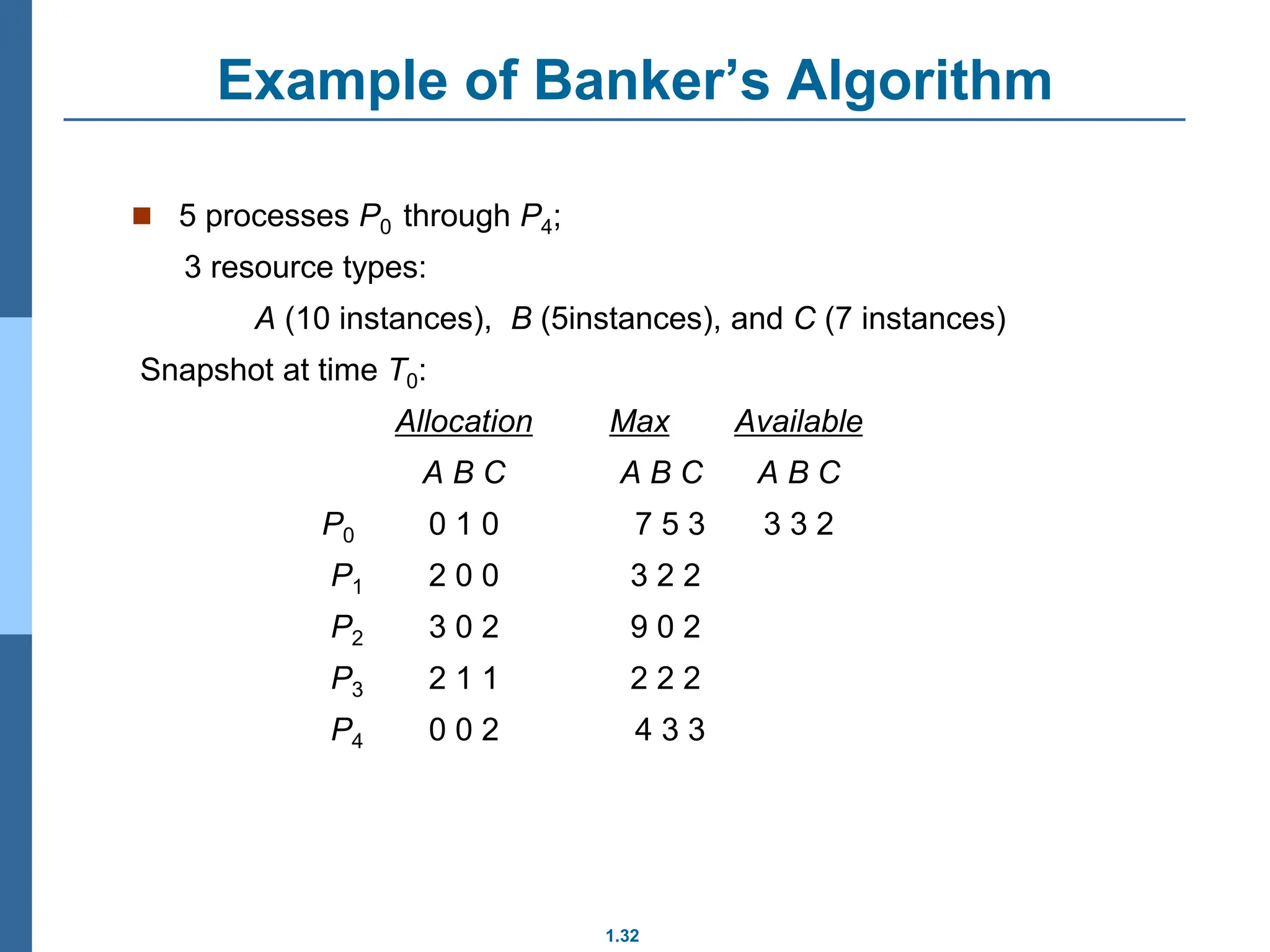
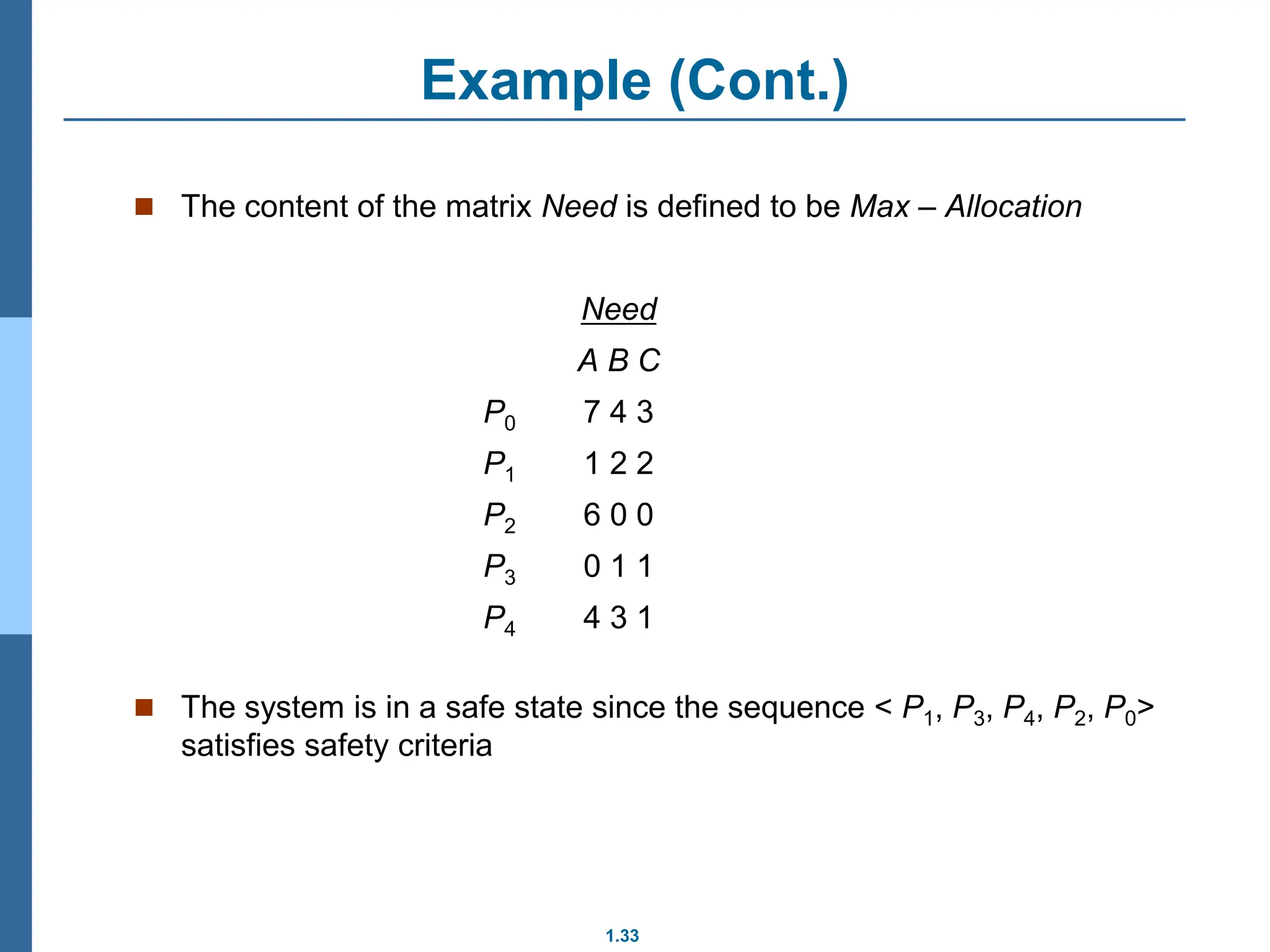
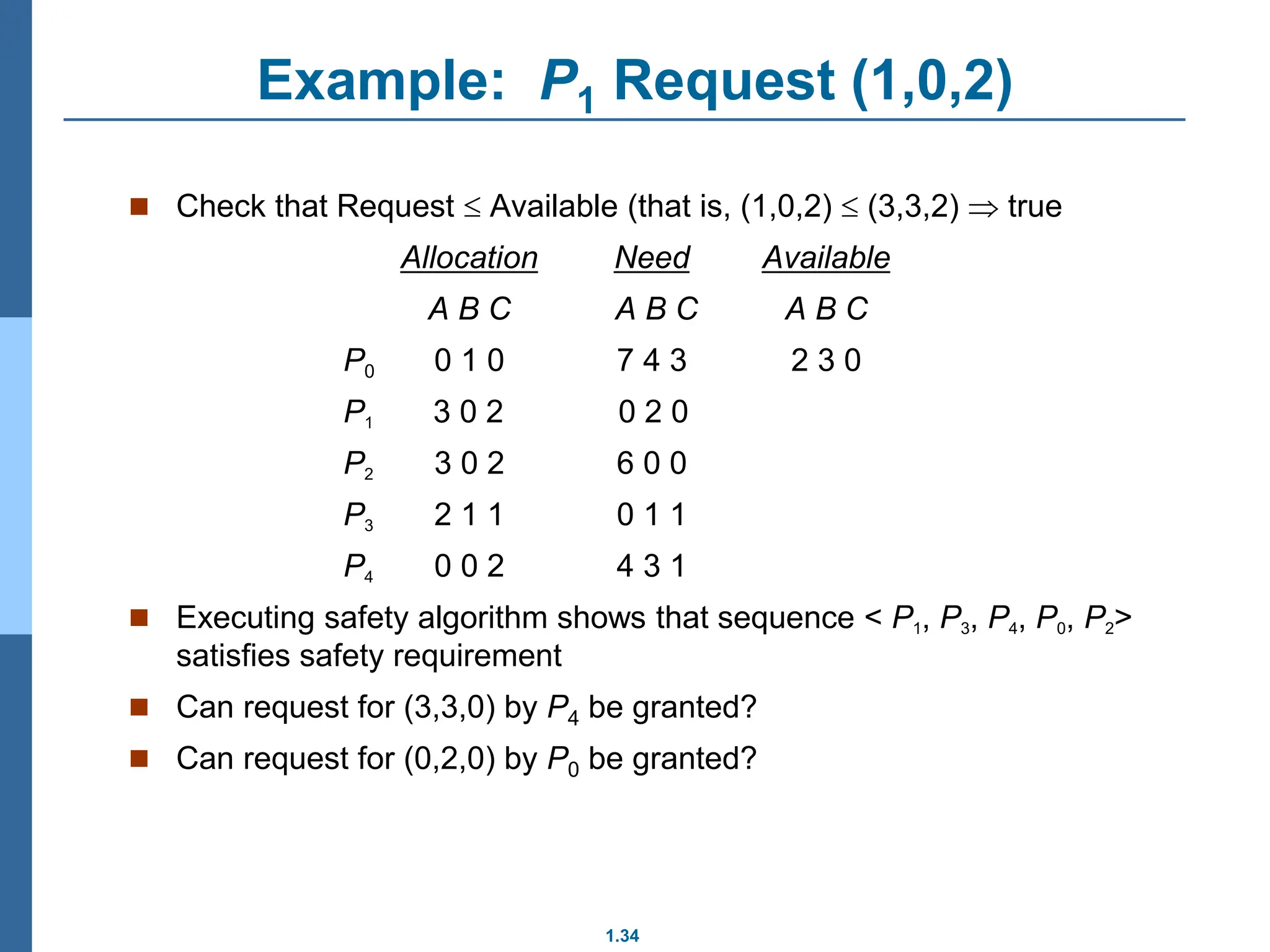
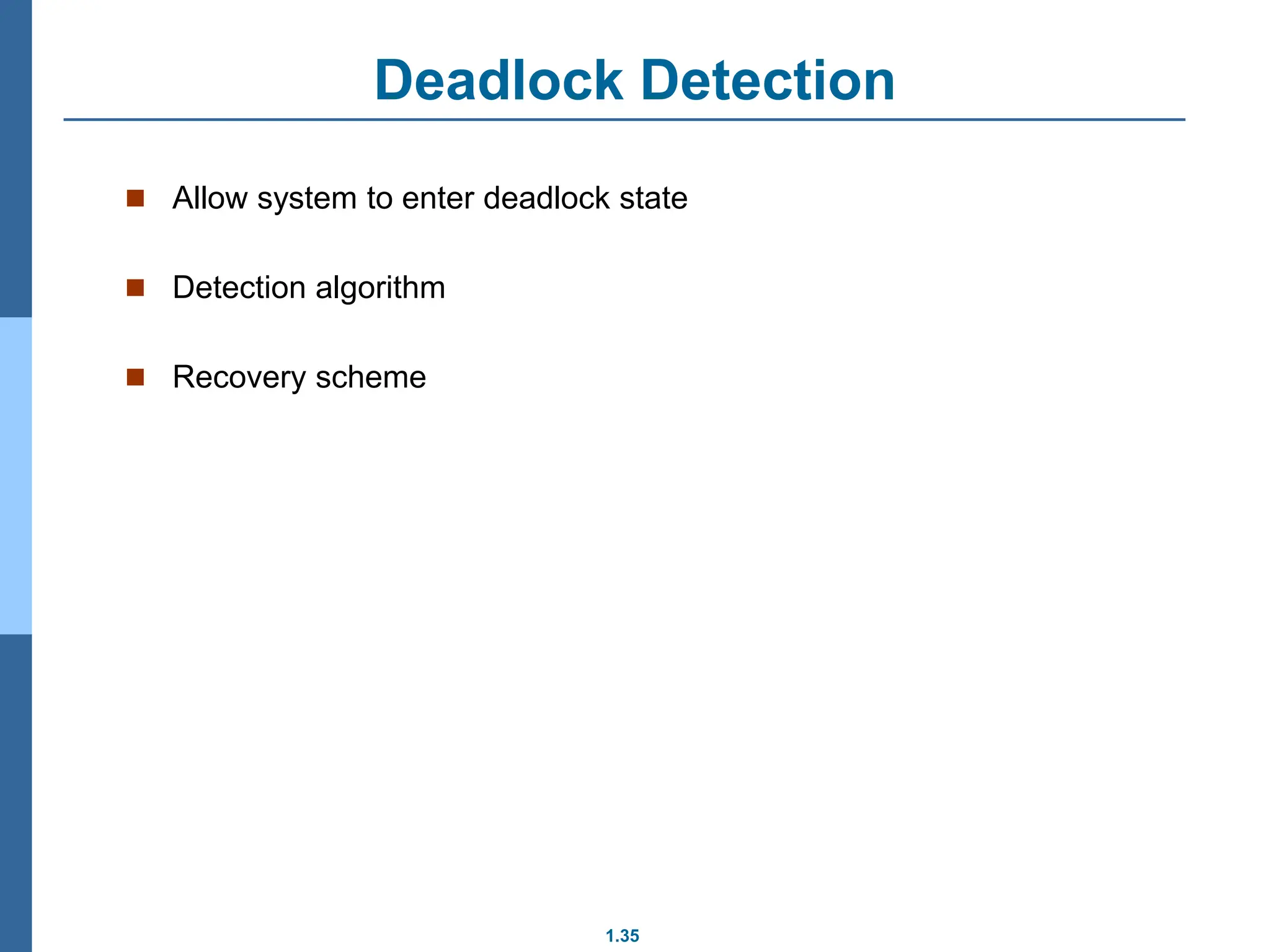

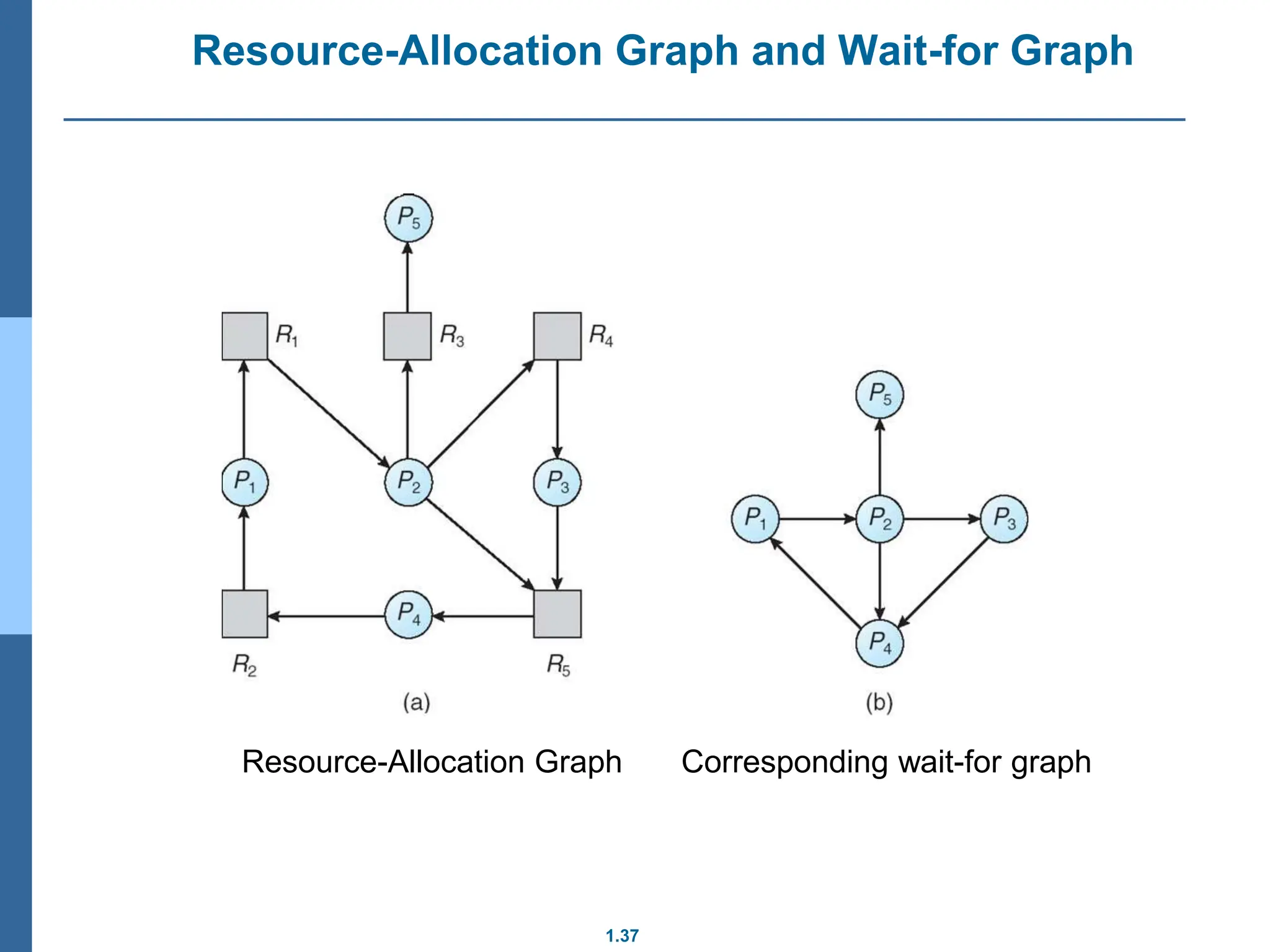
![1.38
Several Instances of a Resource Type
Available: A vector of length m indicates the number of available
resources of each type.
Allocation: An n x m matrix defines the number of resources of each
type currently allocated to each process.
Request: An n x m matrix indicates the current request of each
process. If Request [ij] = k, then process Pi is requesting k more
instances of resource type. Rj.](https://image.slidesharecdn.com/oslec1415-240329181739-a3c048ba/75/OSLec14-15-Deadlocksinopratingsystem-pptx-38-2048.jpg)
![1.39
Detection Algorithm
1. Let Work and Finish be vectors of length m and n, respectively Initialize:
(a) Work = Available
(b) For i = 1,2, …, n, if Allocationi 0, then
Finish[i] = false;otherwise, Finish[i] = true
2. Find an index i such that both:
(a) Finish[i] == false
(b) Requesti Work
If no such i exists, go to step 4](https://image.slidesharecdn.com/oslec1415-240329181739-a3c048ba/75/OSLec14-15-Deadlocksinopratingsystem-pptx-39-2048.jpg)
![1.40
Detection Algorithm (Cont.)
3. Work = Work + Allocationi
Finish[i] = true
go to step 2
4. If Finish[i] == false, for some i, 1 i n, then the system is in deadlock
state. Moreover, if Finish[i] == false, then Pi is deadlocked
Algorithm requires an order of O(m x n2) operations to detect
whether the system is in deadlocked state](https://image.slidesharecdn.com/oslec1415-240329181739-a3c048ba/75/OSLec14-15-Deadlocksinopratingsystem-pptx-40-2048.jpg)
![1.41
Example of Detection Algorithm
Five processes P0 through P4; three resource types
A (7 instances), B (2 instances), and C (6 instances)
Snapshot at time T0:
Allocation Request Available
A B C A B C A B C
P0 0 1 0 0 0 0 0 0 0
P1 2 0 0 2 0 2
P2 3 0 3 0 0 0
P3 2 1 1 1 0 0
P4 0 0 2 0 0 2
Sequence <P0, P2, P3, P1, P4> will result in Finish[i] = true for all i](https://image.slidesharecdn.com/oslec1415-240329181739-a3c048ba/75/OSLec14-15-Deadlocksinopratingsystem-pptx-41-2048.jpg)
